

20 Science Experiments That Are Basically Magic
Are you looking for some seriously magic science experiments? These ideas will completely delight you and your kids!
If your kids are bored, or you’re just looking for something fun to do at home, science experiments are a great option! They can help you teach difficult science concepts, and provide your kids with something fun to do. Science experiments are so much fun, and my daughter loves them! However, not all science experiments are created equal!
This list of science experiments are basically magic! You wouldn’t believe your eyes or theirs when they do these experiments! No matter what age your child is, something here is sure to spark their curiosity. Here are 20 science experiments that are basically magic.
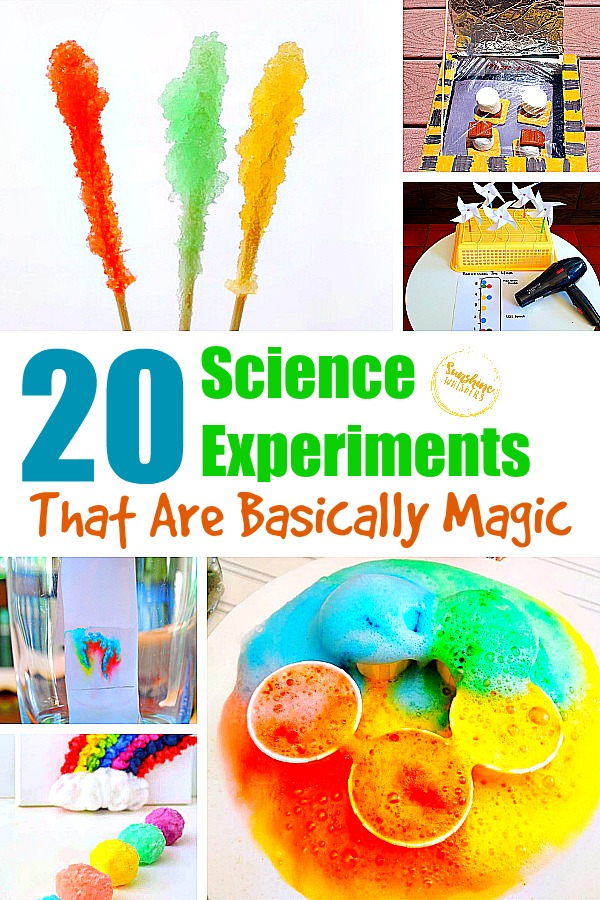
Sunshine Whispers participates in the Amazon Associates and Amazon Influencer Programs. As an Amazon Associate we earn from qualifying purchases. We may earn money or products from the companies mentioned on this site and in this post.
1. How to Create a Foaming Rainbow
Ok, this is pretty much the coolest project EVER! And it takes only 3 ingredients! (4 if you count the paper cups).
2. How Do Folded Mountains Form
Your budding geologist will love this easy experiment that show how mountains form.
3. Acids and Bases Experiment
This is a fun experiment where you can blow a balloon up without using your own breath!
4. Dissolving Marshmallows
I love this experiment because it asks kids to keep a science journal and come up with a hypothesis for what will happen.
5. How to Make Oobleck
Oh course we want to do something that will be a little messy and fun!
6. Firework Experiment
A great experiment about water, oil, and density. Also– it’s really pretty.
7. Paper Chromatography
What happens when colors mix? This is a great experiment that teaches that concept.

8. Grow Gold Overnight
An awesome experiment in crystal making. This would be super cool for St. Patrick’s Day.
9. DIY Magic Rainbow Rocks With Hidden Treasure Inside
Another fantastic experiment that includes a surprise! This is meant for younger kids but seriously, my 7 year old would go ga-ga for this activity!
10. How Do Penguins Stay Dry? Penguin Science Experiment
A fun experiment that talks about water absorption. And really.. penguins are just plain cute.
11. DIY Solar Oven Smores
The perfect experiment to do on a hot hot summer day. Oh.. and chocolate!
12. Spring Butterfly Experiment
You can actually make your butterfly come to life in this fun and easy experiment.
13. Clear Slime
Usually it’s pretty hard to make clear slime.. but this method really works.
14. Build a Wind Farm Science Activity
Kids can easily build their own wind farm and track the effects of wind power. Pretty cool experiment!
15. Sidewalk Paint Rockets
An explosive take on sidewalk chalk paint. Love it!
16. Easy Heart Pump Model
Wow. Your budding heart surgeon will be fascinated with this experiment.
17. Balloon Powered Sponge Boat
Anytime you can do an experiment that causes something to move… that is awesome.
18. Semipermeable Membrane STEAM Activity
A really cool experiment using coffee filters.
19. Homemade Rock Candy
Crystals and candy-making. How could that be any tastier?
20. Simple Heat Conduction Experiment
I love this experiment.. it’s a contest to see what kind of utensil will melt the butter faster.
Check out these fun science experiment ideas too!
- 4 Fun Kitchen Science Experiments to Conduct This Summer
- 15 Amazing Spring Science Experiments
- Edible Slime Recipes
- Slime Recipes with 4 Ingredients of Less
Hi! If you love to have fun with your kids and explore, create, travel, laugh, and love.. you have come to the right place! Follow along to get great tips for fun in Maryland, family travel destinations, and other family fun ideas!
Similar Posts
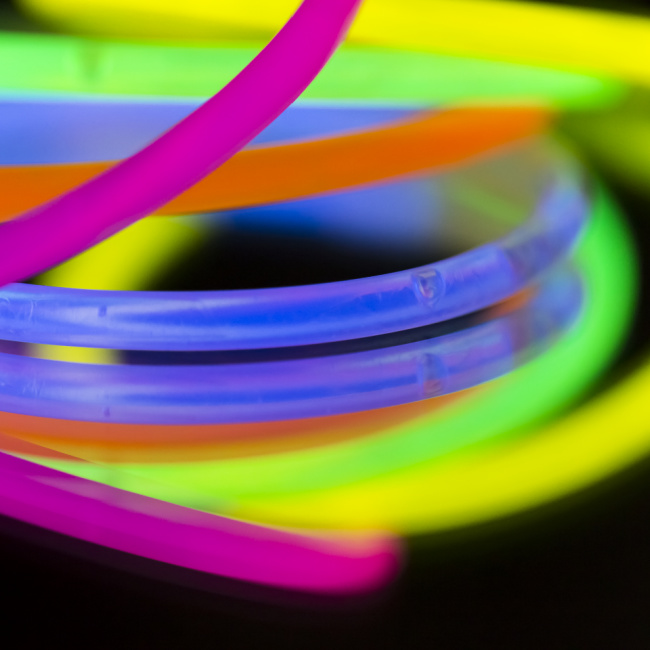
20 Cool Glow Stick Ideas
20 Cool Glow Stick Ideas Glow Sticks are a cheap and fun way to add a little bit of…

The Absolute Best Games for Gameschooling
Best Games for Gameschooling These fun family games are the absolute best games for gameschooling! Check them out and…

The Best Pirate Books for Kids to Read
The Best Pirate Books for Kids to Read These are the best Pirate books for kids to read. They…
Leave a Reply Cancel reply
Your email address will not be published. Required fields are marked *
This site uses Akismet to reduce spam. Learn how your comment data is processed .
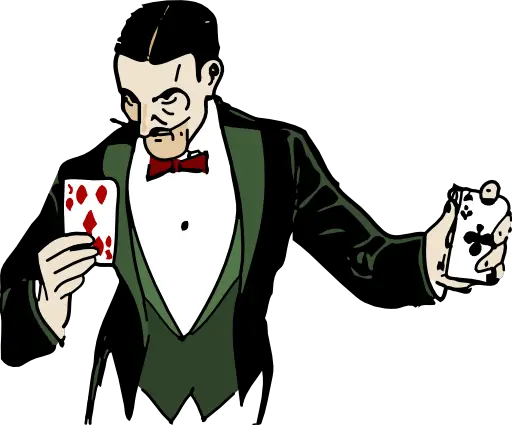
magic tricks & mind tricks
Support our educational content for free when you purchase through links on our site. Learn more
17 Magical Science Experiments That Will Blow Your Mind [2024] ✨
- March 14, 2024
- Science Experiments
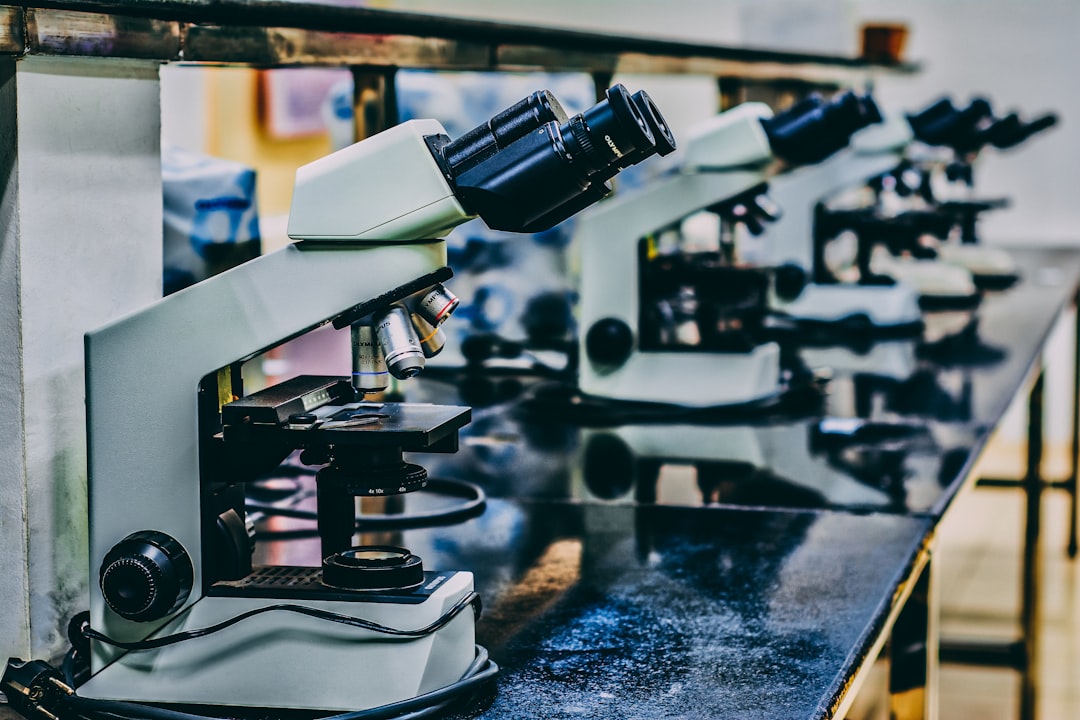
Have you ever wondered how magic tricks work? The art of illusion has captivated audiences for centuries, but did you know that there’s actually a scientific explanation behind many magic tricks? In this article, we’ll explore the fascinating world of magical science experiments that will leave you in awe. Get ready to have your mind blown!
Table of Contents
Quick answer, quick tips and facts, background: the science behind magic, 1. mystical mustard packet, 2. walking on eggs, 3. quarter catch, 4. dry paper, 5. bending straw illusion, 6. walk on water, 7. magnetic wand, 8. diving egg, 9. disappearing reflection, 10. leakproof baggie, 11. magic water cup, 12. egg in a bottle, 13. balloon pop not, 14. friction fun, 15. fabulous floating rocks, 16. dry erase, recommended links, reference links.
Magic tricks are not just about sleight of hand and misdirection. They often involve scientific principles that create mind-boggling illusions. From walking on eggs to bending straws with your mind, these magical science experiments will leave you amazed and wanting to learn more. Get ready to unlock the secrets behind some of the most mind-blowing magic tricks!
- 👉 CHECK PRICE on: Magic Science Experiment Kits | Magic Supplies | Magic Books
- Magic tricks often rely on scientific principles such as chemistry, physics, and psychology.
- Practice and presentation are key to performing magic tricks successfully.
- Many magic tricks can be performed using everyday objects found around the house.
- Magic can be a great way to spark interest in science and encourage curiosity.
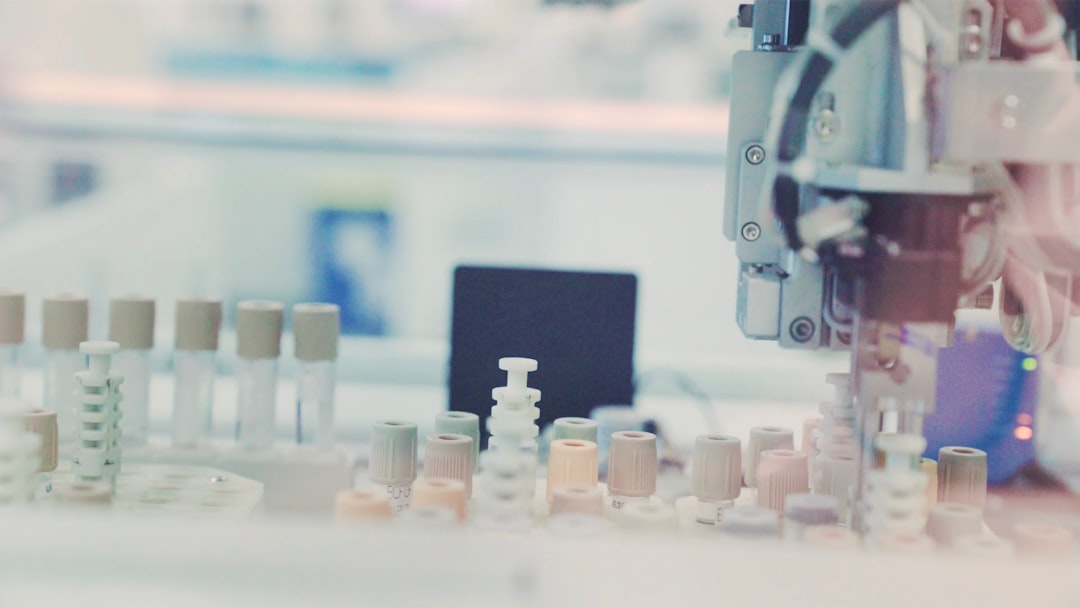
Magic and science may seem like two completely different worlds, but they are more closely related than you might think. The principles behind many magic tricks are rooted in scientific concepts. Understanding these concepts can help us unravel the mysteries behind the illusions.
For example, the art of misdirection relies on psychology and the brain’s ability to focus on one thing while ignoring others. Sleight of hand tricks often exploit the brain’s tendency to fill in missing information, creating the illusion of objects appearing or disappearing.
Physics plays a role in many magic tricks as well. Forces such as gravity, friction, and air pressure can be manipulated to create seemingly impossible feats. Chemistry is also a key player, with chemical reactions and properties used to create magical transformations.
Now that we have a better understanding of the science behind magic, let’s dive into some mind-blowing magical science experiments!
17 Mind-Blowing Magical Science Experiments
✨ Rating: 9.5/10 ✨
Have you ever seen a mustard packet magically change color? This simple yet impressive trick is all about chemistry. By mixing two colorless liquids inside the packet, a chemical reaction occurs, resulting in a vibrant color change. It’s a great way to amaze your friends and learn about chemical reactions at the same time!
To perform this experiment, you’ll need a mustard packet, a cup of water, and a small container of baking soda. Follow these steps:
- Fill the cup with water.
- Open the mustard packet and empty the contents into the cup of water.
- Add a small amount of baking soda to the cup.
- Watch as the mustard packet changes color right before your eyes!
✨ Rating: 8.5/10 ✨
Walking on eggs without breaking them may seem impossible, but with a little science, you can defy gravity! This experiment demonstrates the concept of weight distribution and the strength of eggshells.
To perform this experiment, you’ll need a dozen eggs and a flat surface. Follow these steps:
- Place the eggs on a flat surface, making sure they are close together.
- Carefully step onto the eggs, distributing your weight evenly.
- Slowly shift your weight from one foot to the other, maintaining balance.
- Walk across the eggs without breaking a single one!
✨ Rating: 9/10 ✨
Can you catch a quarter off your elbow without dropping it? With a little practice and understanding of physics, you can master this impressive trick. The key is to create a centrifugal force that keeps the quarter in place as you catch it.
To perform this trick, you’ll need a quarter and some patience. Follow these steps:
- Place the quarter on your elbow, positioning your arm at a 90-degree angle.
- Quickly flick your arm downward, creating a circular motion.
- As the quarter falls, catch it with your hand before it hits the ground.
- Practice makes perfect, so keep trying until you master the technique!
✨ Rating: 7.5/10 ✨
Imagine being able to dunk a piece of paper in water and pull it out completely dry. This magical experiment is all about the properties of water and surface tension. By using a special solution, you can create a barrier that repels water, keeping the paper dry.
To perform this experiment, you’ll need a bowl of water, a piece of paper, and a solution made of water and a hydrophobic substance like wax or oil. Follow these steps:
- Dip the piece of paper into the solution, making sure it is fully coated.
- Slowly lower the paper into the bowl of water.
- Watch as the paper remains dry, defying the laws of nature!
- Remove the paper from the water and marvel at the magic.
Have you ever seen a straw bend without anyone touching it? This mind-bending illusion is all about the science of light refraction. By placing a straw in a glass of water at a certain angle, you can create the illusion of a bent straw.
To perform this illusion, you’ll need a glass of water and a straw. Follow these steps:
- Fill the glass with water, leaving some space at the top.
- Place the straw in the glass, making sure it is partially submerged.
- Look at the straw from different angles and be amazed as it appears to bend!
- The bending is caused by the way light travels through water, creating an optical illusion.
Ever dreamt of walking on water? With a non-Newtonian fluid called oobleck, you can make this dream a reality. Oobleck is a mixture of cornstarch and water that behaves like a liquid when handled gently but turns solid under pressure.
To perform this experiment, you’ll need a large container, water, and cornstarch. Follow these steps:
- Fill the container with water, leaving some space at the top.
- Slowly add cornstarch to the water, stirring until you achieve a gooey consistency.
- Step onto the oobleck and be amazed as it supports your weight!
- Walk, run, or jump on the oobleck and experience the magic of this non-Newtonian fluid.
✨ Rating: 8/10 ✨
With a simple magnetic wand, you can perform a magical experiment that seems to defy gravity. By using the power of magnetism, you can make objects move without touching them.
To perform this experiment, you’ll need a magnetic wand and a selection of small magnetic objects. Follow these steps:
- Place the magnetic objects on a flat surface.
- Hold the magnetic wand above the objects without touching them.
- Move the wand around, and watch as the objects follow its magnetic field!
- Experiment with different objects and see how they react to the magnetic wand.
Can an egg dive into a glass of water without sinking? With a little science, you can make it happen! This experiment demonstrates the concept of inertia and the relationship between mass and acceleration.
To perform this experiment, you’ll need a hard-boiled egg, a glass of water, and a small piece of cardboard. Follow these steps:
- Place the egg on top of the glass, making sure it is balanced.
- Quickly push the cardboard down into the glass, trapping the egg inside.
- Watch as the egg dives into the water without sinking!
- The egg’s inertia keeps it in motion, allowing it to dive into the water before coming to a stop.
Have you ever looked in a mirror and seen your reflection disappear? This magical experiment is all about the science of light and reflection. By using a special mirror, you can create the illusion of a disappearing reflection.
To perform this experiment, you’ll need a mirror with a two-way reflective surface. Follow these steps:
- Hold the mirror in front of you, making sure the reflective side is facing you.
- Look at your reflection in the mirror and observe it carefully.
- Slowly tilt the mirror, and be amazed as your reflection disappears!
- The two-way reflective surface allows light to pass through from certain angles, creating the illusion of a disappearing reflection.
Can you poke pencils through a baggie filled with water without it leaking? With a little science, you can perform this seemingly impossible trick. The secret lies in the properties of polymers and the concept of surface tension.
To perform this experiment, you’ll need a sealable baggie, water, and some sharpened pencils. Follow these steps:
- Fill the baggie with water, leaving some space at the top.
- Seal the baggie, making sure it is tightly closed.
- Slowly push the sharpened pencils through the baggie, one at a time.
- Be amazed as the baggie remains leakproof, even with pencils sticking out of it!
- The polymers in the baggie create a tight seal around the pencils, preventing water from leaking out.
Imagine being able to turn a cup of water upside down without spilling a single drop. With a little science, you can perform this magical experiment. The secret lies in air pressure and the concept of a vacuum.
To perform this experiment, you’ll need a cup, water, and a piece of cardboard or plastic. Follow these steps:
- Fill the cup with water, leaving some space at the top.
- Place the cardboard or plastic over the mouth of the cup, making sure it is tightly sealed.
- Carefully turn the cup upside down, keeping the cardboard or plastic in place.
- Slowly remove your hand from the cardboard or plastic, and be amazed as the water stays inside the cup!
- The air pressure outside the cup pushes against the cardboard or plastic, creating a vacuum that holds the water in place.
Can you put an egg inside a bottle without breaking it? With the power of air pressure, you can perform this impressive trick. The key is to create a change in air pressure that allows the egg to be sucked into the bottle.
To perform this trick, you’ll need a hard-boiled egg, a glass bottle with a narrow neck, and a piece of burning paper. Follow these steps:
- Peel the hard-boiled egg, making sure it fits through the neck of the bottle.
- Light a piece of paper on fire and quickly drop it into the bottle.
- Immediately place the egg on top of the bottle, making sure it covers the opening completely.
- Watch as the egg gets sucked into the bottle!
- The burning paper heats the air inside the bottle, causing it to expand. When the paper goes out, the air cools down, creating a vacuum that pulls the egg inside.
Can you stick a needle through a balloon without popping it? With a little science, you can perform this amazing trick. The secret lies in the properties of polymers and the concept of elasticity.
To perform this trick, you’ll need a balloon, a needle, and some patience. Follow these steps:
- Inflate the balloon, making sure it is not too tight.
- Hold the balloon steady and slowly push the needle through the rubber, avoiding any sudden movements.
- Be amazed as the needle goes through the balloon without popping it!
- The polymers in the balloon stretch and seal around the needle, preventing air from escaping.
✨ Rating: 7/10 ✨
Friction can be magically fun! This experiment demonstrates the concept of friction and how it can be manipulated to create surprising effects.
To perform this experiment, you’ll need a smooth surface, a small object like a coin, and a piece of paper. Follow these steps:
- Place the piece of paper on the smooth surface.
- Hold the coin at one end of the paper and slowly pull it, keeping it in contact with the paper.
- Be amazed as the paper moves along with the coin, defying gravity!
- The friction between the coin and the paper creates a force that allows the paper to move without slipping.
Can rocks float? With a little science, you can make it seem like they do! This experiment demonstrates the concept of buoyancy and the relationship between density and volume.
To perform this experiment, you’ll need a container filled with water and some rocks. Follow these steps:
- Carefully place the rocks in the water, one at a time.
- Be amazed as the rocks float on the surface of the water!
- The rocks displace an amount of water equal to their weight, allowing them to float.
With a little magic, you can bring drawings to life! This experiment combines the art of drawing with the science of static electricity.
To perform this experiment, you’ll need a dry erase marker, a whiteboard, and a piece of fabric. Follow these steps:
- Draw a simple figure on the whiteboard using the dry erase marker.
- Rub the fabric against the whiteboard, creating a static charge.
- Hold the fabric close to the drawing, and be amazed as the figure comes to life, moving and dancing!
- The static electricity attracts and repels the ink particles, creating the illusion of a living drawing.

What kind of science are magic tricks?
Magic tricks often involve principles from various scientific disciplines, including physics, chemistry, psychology, and even mathematics. Understanding the science behind magic tricks can help us appreciate the artistry and skill involved in creating illusions.
Read more about “What is a Jedi Mind Control? … 🧙♂️”
What science experiment went horribly wrong?
While science experiments can be fascinating and educational, there have been instances where things went horribly wrong. One notable example is the Chernobyl disaster in 1986, which occurred during a failed safety test at the Chernobyl Nuclear Power Plant in Ukraine. The experiment led to a catastrophic nuclear meltdown, resulting in the release of radioactive materials and a devastating impact on the environment and human health.
Is there a science behind magic?
Yes, there is a science behind magic! Many magic tricks rely on scientific principles such as physics, chemistry, and psychology. By understanding these principles, magicians can create illusions that seem impossible to the audience.
Read more about “10 Mind-Blowing Magic Tricks That Are All About Science … 🎩✨”
What is the biggest science experiment of all time?
One of the biggest science experiments of all time is the Large Hadron Collider (LHC) at CERN. The LHC is the world’s largest and most powerful particle accelerator, designed to study the fundamental particles and forces that make up the universe. It has been instrumental in the discovery of the Higgs boson and has contributed to our understanding of the fundamental laws of physics.
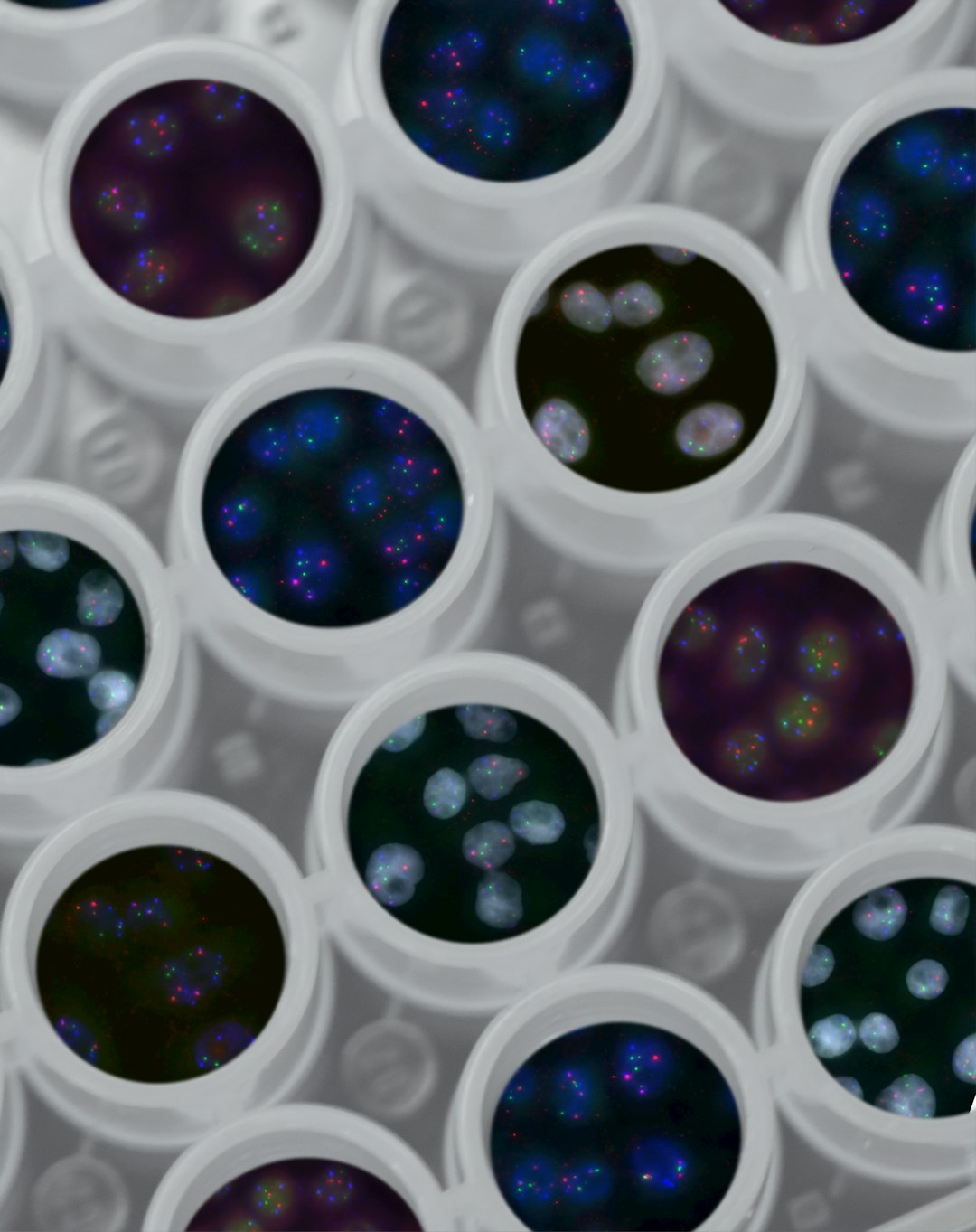
In conclusion, magic and science go hand in hand. The world of magic tricks is not just about sleight of hand and misdirection; it’s also about understanding the scientific principles that create mind-boggling illusions. From walking on eggs to bending straws with your mind, these magical science experiments will leave you in awe and inspire you to explore the fascinating world of science.
So go ahead, grab a magic science experiment kit, and start exploring the wonders of the scientific world through the lens of magic. Who knows, you might just uncover the secrets to some of the greatest magic tricks of all time!
- Card Tricks
- Close-up Magic
- The Greatest Magic Trick of All Time
- Science Fun – Magic Science Experiments
- Chernobyl Disaster
- Large Hadron Collider
Leave a Reply Cancel Reply
Your email address will not be published. Required fields are marked *
Add Comment *
Save my name, email, and website in this browser for the next time I comment.
Post Comment
Trending now
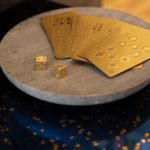
Science Fun

Magic Science Experiments
Easy magic science experiments you can do at home! Click on the experiment image or the view experiment link below for each experiment on this page to see the materials needed and procedure. Have fun trying these experiments at home or use them for SCIENCE FAIR PROJECT IDEAS.
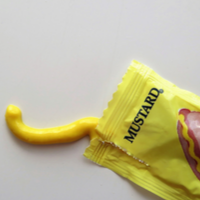
Mystical Mustard Packet:
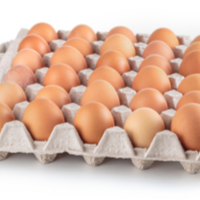
Walking On Eggs:
Don’t Scramble These Eggs
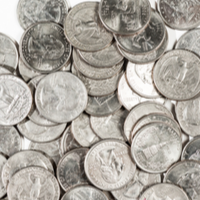
Quarter Catch:

Bending Straw Illusion:

Walk On Water:
Explore An Awesome Non-Newtonian Material
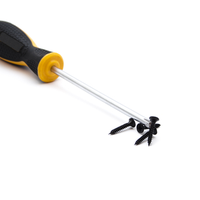
Magnetic Wand:

Diving Egg:
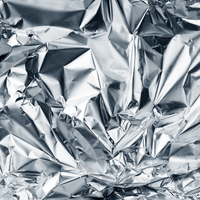
Disappearing Reflection:

Leakproof Baggie:
Poke Pencils Through A Baggie Of Water
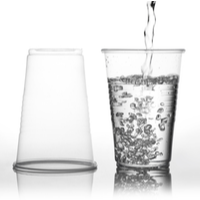
Magic Water Cup:
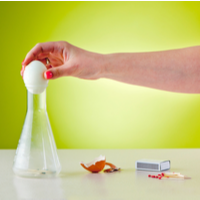
Egg In A Bottle:
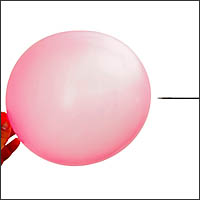
Balloon Pop! Not!
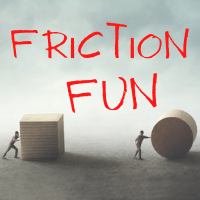
Friction Fun:
Friction Can Be Magically Fun

Fabulous Floating Rocks:
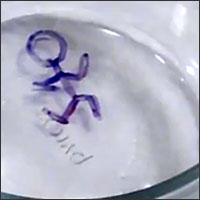
GET OUR LATEST UPDATES!

25+ Easy Magic Science Experiments
- Kindergartner
- Preschooler
INSIDE: You’ll find over 25 easy to replicate science experiments for kids that appear to happen by magic! From sunscreen painting; fireworks in a jar; colour changing moon dough, orange volcanos and more. There are tons of fun ideas here to keep your little scientist engaged and exploring.
Looking for more STEM activities for toddlers and preschoolers? Check out 20+ REALLY EASY STEM ACTIVITIES USING BALLOONS for more great ideas!
25+ Easy Magic Science Experiments You Can Do At Home
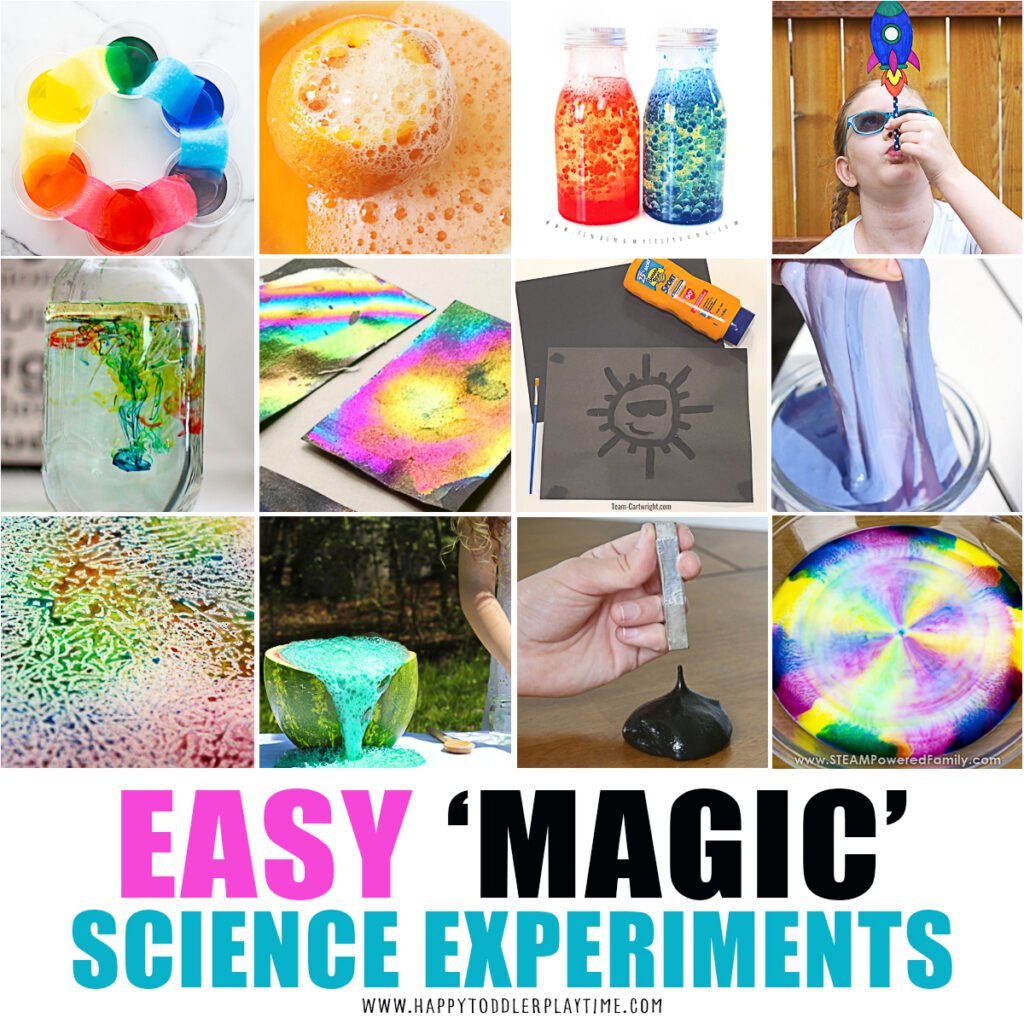
‘Magic’ Science Experiments
- Walking Water Experiment (The Best Ideas From Kids)
- Water Refraction Science Experiment (What We Do All Day)
- Exploding Watermelons! KayeSquad
- Color Explosion Magic Milk Experiment (STEAM Powered Family)
- Watermelon Science Activities – Baking Soda and Vinegar Science Experiment (Natural Beach Living)
- Colour Changing Moon Dough Recipe (STEAM Powered Family)
- Electric Eels (BiztnGiggles)
- Sunscreen Painting: STEAM For Kids Team Cartwright
- Orange Volcanoes – A Fun Science Experiment for Kids Using Simple Ingredients (The Art Kit Blog)
- Rainbow Paper | Color Science for Kids (Science Kiddo)
- Invisible Painting for Kids – Science and Art Secret Messages (Natural Beach Living)
- Beautiful Chromatography Flowers Science Project (123 Homeschool 4 Me)
- How To Make Magic Mud – From a Potato! (The King of Random)
- A rainbow sugar water science activity (The STEM Mum)
- Iodine and Starches Visual Science Experiment for Kids (Mama Smiles)
More ‘Magic’ STEAM Activities
- How to make a Lava Lamp Experiment Sensory Bottle (Finding Myself Young)
- DIY Straw Rockets (Artsy Fartsy Mama)
- ‘Magic’ Drawing with Refraction of Light: an art meets science activity for kids (Go Science Kids)
- Blooming Paper Flower Experiment for Early Learning (Active Littles)
- Colorful DIY Glue Suncatcher Craft (Mom Brite)
- Skittles Experiment: Exploring Color Science (The Soccer Mom Blog)
- Colorful Fizzing Sensory Bin with Vinegar and Baking Soda (My Bored Toddler)
- Making Borax Crystals (The Craft Train)
- Fireworks in a Jar (I Can Teach My Child)
- How to Make Magnetic Slime (Frugal Fun 4 Boys)
- Wax paper Resist (Housing a Forest)
I wrote a book of Sensory Bins!
WILL YOU TRY ANY OF THESE FUN MAGIC SCIENCE EXPERIMENTS DAY CRAFTS AND ACTIVITIES WITH YOUR KIDS? Pin it for later!

Filed Under:
Other posts you may like....

Fine Motor Activities for Fall

Easy Leaf Animal Crafts for Kids

Trim the Lion's Mane: Scissor Skills Activity for Kids

Hands-on Fall Preschool Math Activities
Review and rate this post cancel reply.
I love hearing from you! Submit your question or review here. Your email address will not be published. Required fields are marked*.
This site uses Akismet to reduce spam. Learn how your comment data is processed .
13 Magical Science Experiments for Kids
We’re jazzed about these magical science experiments we’ve been seeing all around and we know you’ll love them too. Use up all your senses as you explore each of these experiments made of magic ! They are all about diving in and getting seriously silly about science. There’s mixing, growing, shaking, and swirling!
1. Rainbow Marker Coffee Filters : It’s so amazing to watch the colors travel up the coffee filters! Find the tutorial over at Make and Takes .
2. Frozen Silly Putty : You won’t find putty more sparkly than this! Find the tutorial over at Paging Fun Mums .
3. Dancing Raisins : Did you know that raisins can dance? This experiment is guaranteed to amaze your kids! Find the tutorial over at Buggy and Buddy .
4. Making Butter and Whipped Cream : Every kid should try making their own butter! This is a fun project to do in the kitchen together. Find the tutorial over at Make and Takes .
5. Glitter Sensory Bottle : These glittery sensory bottles are relaxing for kids and adults alike! Find the tutorial over at See Vanessa Craft .
6. Fizzy Sidewalk Paint : Why play with regular chalk when you could play with fizzy sidewalk paint? Find the tutorial over at Make and Takes .
7. Lemon Juice Mystery Messages : This invisible ink is so mysterious- and you can make it at home with lemon juice! Find the tutorial over at Make and Takes .
8. Make GIANT Bubbles : Bubbles so big, a kid can fit inside! These are the perfect activity for a hot summer day. Find the tutorial over at Make and Takes .
9. Crystal Snowflakes :It’s so amazing to watch as the crystals appear! Find the tutorial over at Little Bins for Little Hands .
10. Celery Science Experiment : How do plants drink? Do this experiment with your kids to find out! Find the tutorial over at Coffee Cups and Crayons .
11. Erupting Play Dough Volcano : This play dough volcano actually erupts! Find the tutorial over at Make and Takes .
12. Make Frozen Bubbles : You can actually hold these frozen bubbles in your hand! Find the tutorial over at Housing a Forest .
13. Ice Block Sculptures : Turn a block of ice into a piece of art! These are so gorgeous! Find the tutorial over at The Artful Parent .
More cool science for kids:
Science experiments kids can make in the kitchen
50+ Sensory activities for kids to make
Have fun getting silly with science!

Marie is a mom of 3 living in Seattle, WA. She's been the founder and managing editor of Make and Takes for the last 16 years, sharing DIY tutorials for home, family, and fun. Author of Make and Takes for Kids , Early Childhood and Elementary graduate, and currently teaching 2nd grade in Seattle!
- Skip to primary navigation
- Skip to main content
- Skip to primary sidebar

- FREE Experiments
- Kitchen Science
- Climate Change
- Egg Experiments
- Fairy Tale Science
- Edible Science
- Human Health
- Inspirational Women
- Forces and Motion
- Science Fair Projects
- STEM Challenges
- Science Sparks Books
- Contact Science Sparks
- Science Resources for Home and School
Science Magic Tricks for Kids
April 18, 2024 By Emma Vanstone 4 Comments
Here at Science Sparks HQ, we love a bit of magic, whether it be a memory trick, slight of hand or even some science magic . These 10 easy science tricks for kids are great fun and mostly super simple. The density one is a little tricky and potentially messy, but well worth the effort for the incredible end result.
Easy Science Magic Tricks
Skewer through a balloon.
First up is the skewer through a balloon trick. Take care with this one, as the skewer will be sharp, and it might be worth having a few spare balloons around until you get the hang of it.
Top Tip – place a little vegetable oil on the parts of the balloon that the skewer will poke through and push the skewer through the thickest parts of the balloon.
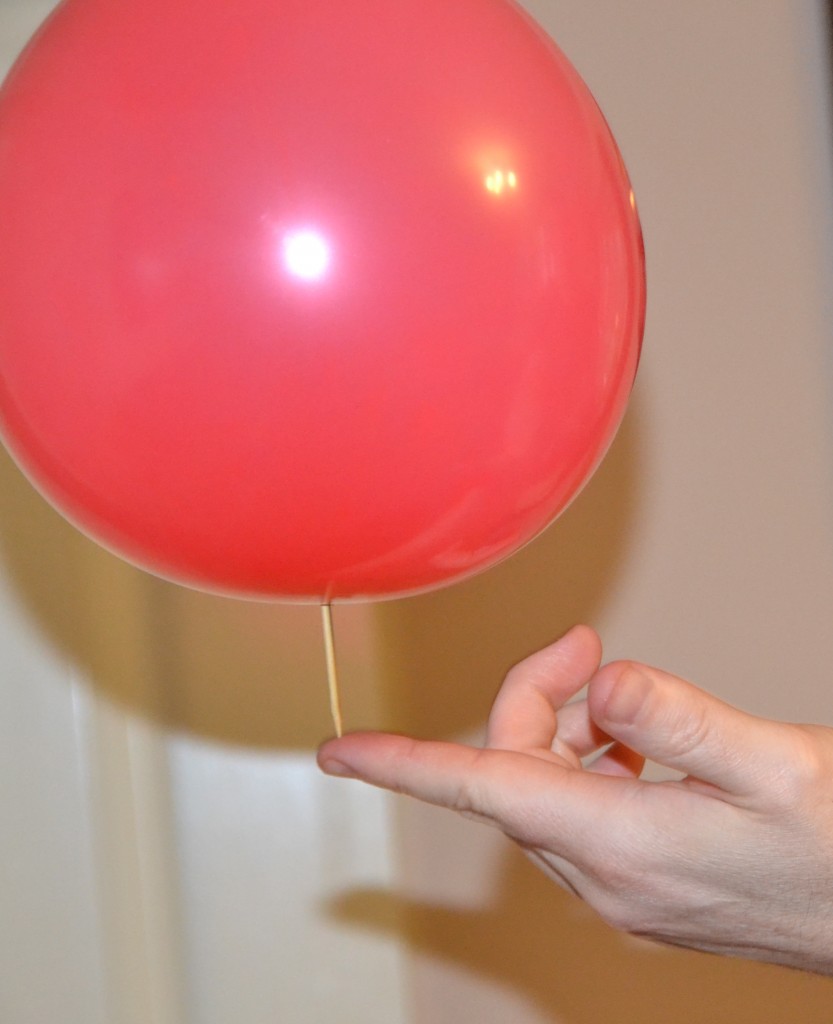
Leakproof Bag
Impress your friends with an easy leakproof bag . All you need for this one is a sealable sandwich bag and some super sharp pencils.
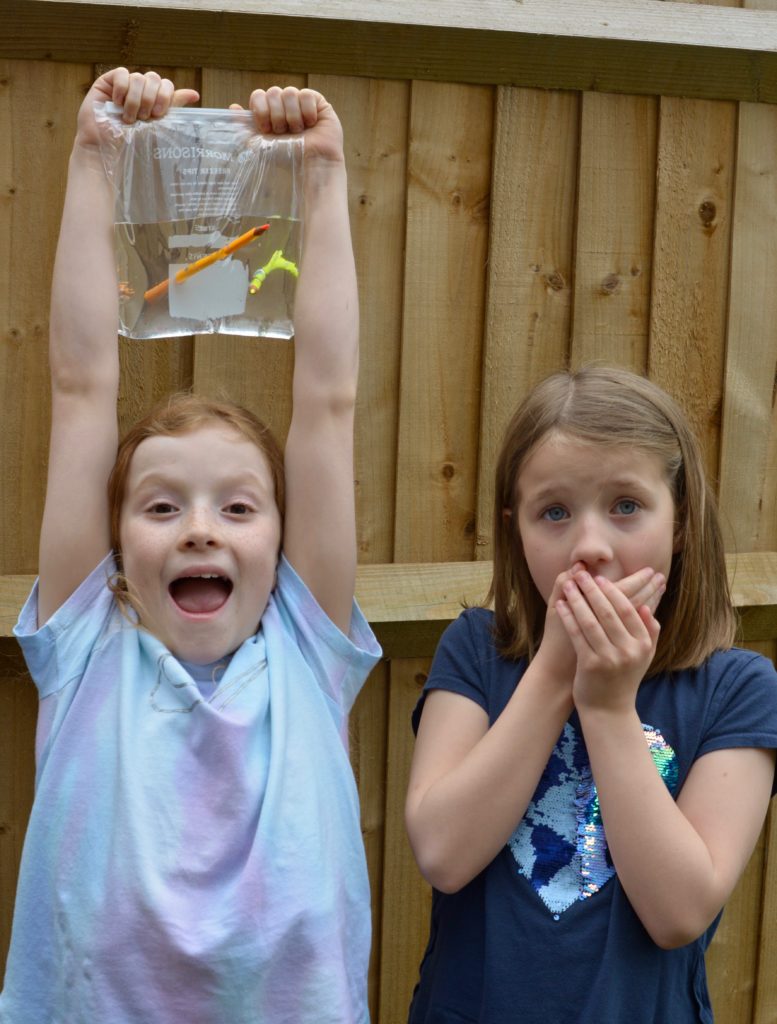
Top Tip – use very sharp pencils.
Make a coin disappear
Did you know you can make a coin disappear using just a glass and water?
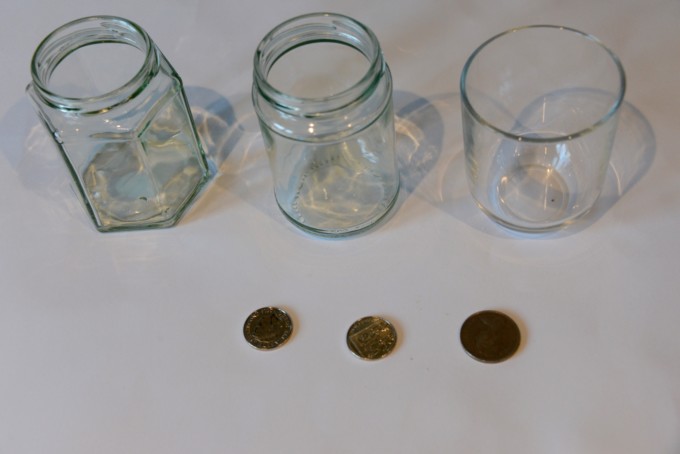
Remove the shell from an egg without touching it!
Remove the shell from an egg without touching it, and then bounce the egg . If the egg bounces easily try it on different surfaces to compare the difference.
If, after all that, you STILL have an intact egg membrane, try making the shrinking the egg and then growing it again while learning about osmosis at the same time.
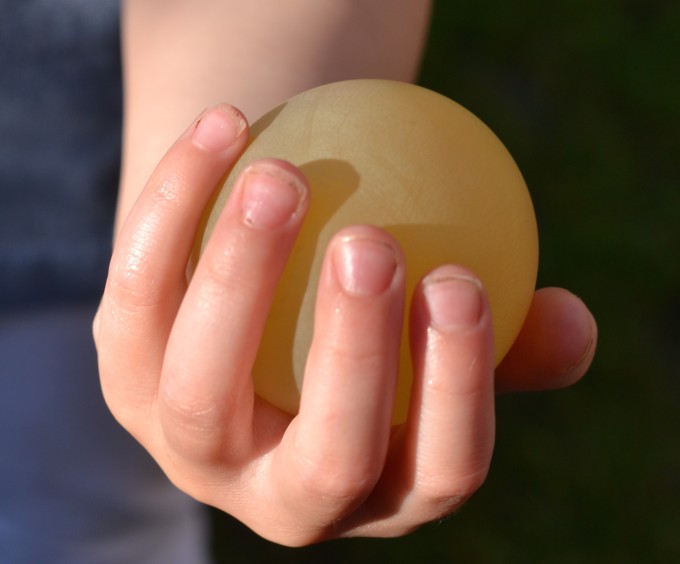
How to Defy Gravity
Did you know you can defy gravity using a magnet and a paper clip? This clever trick is sure to wow an audience!
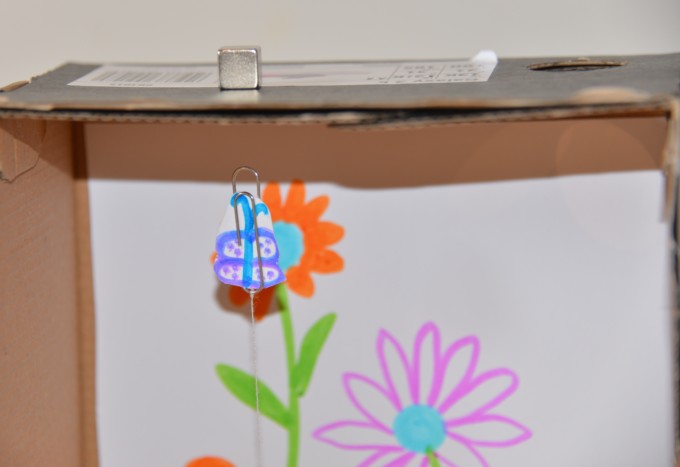
Top tip – a strong magnet works best for this.
Always supervise children when using magnets
Egg in a Bottle Experiment
Watch an egg drop magically into a jar in this fun activity using air pressure ( not magic at all ).
How to make an unbreakable egg
With the shell on the egg this time, find out how to make an unbreakable egg .
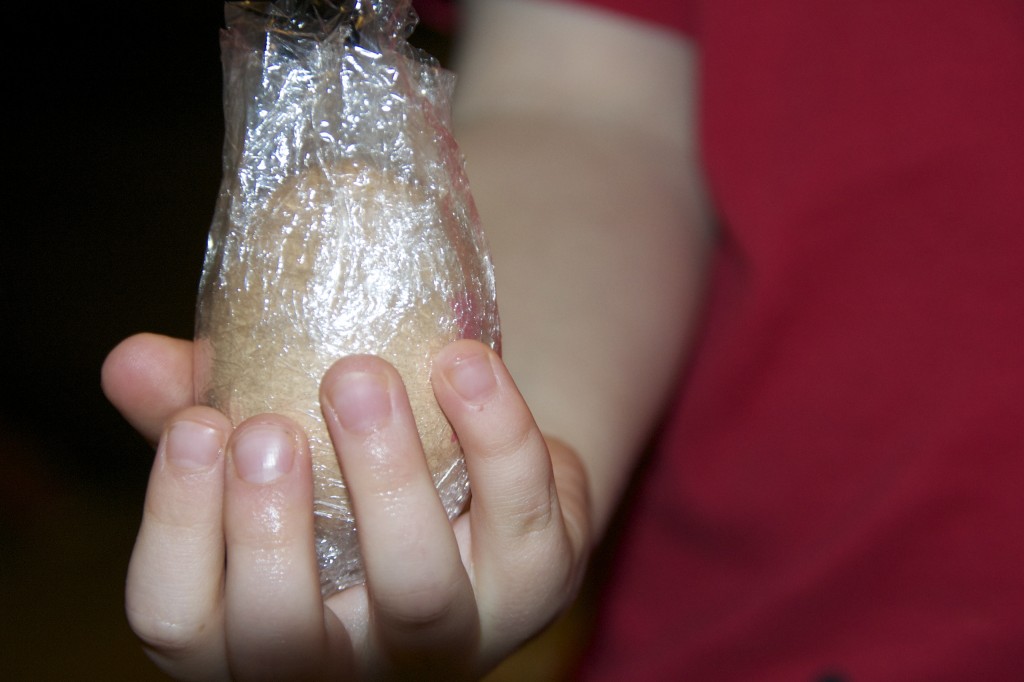
Colour Changing Flowers
Bored of plain white petals? Place them in water and food colouring to change the colour !
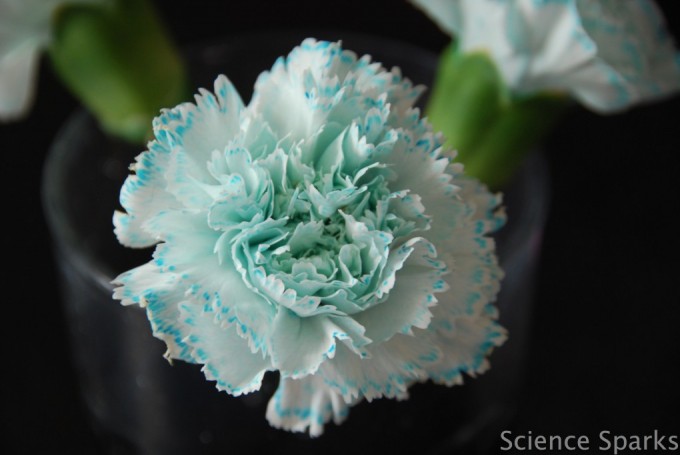
Top tip – natural food colours don’t work for this.
Water that won’t mix
Do you know why the coloured water isn’t mixing with the non-coloured water in the image below? It’s a little density trick. Add lots of salt to the lower layer ( making it more dense ) so the less dense water on top doesn’t mix with the denser coloured lower layer.
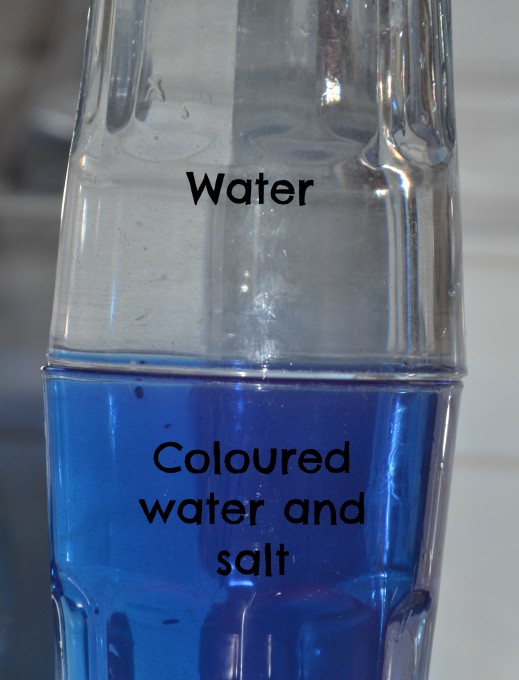
Top tip: This also works with warm and cold water. Warm water is less dense than cold water.
Floating Eggs and Sinking Lemons
Try to make an egg float or a lemon sink ? It might be trickier than you think.
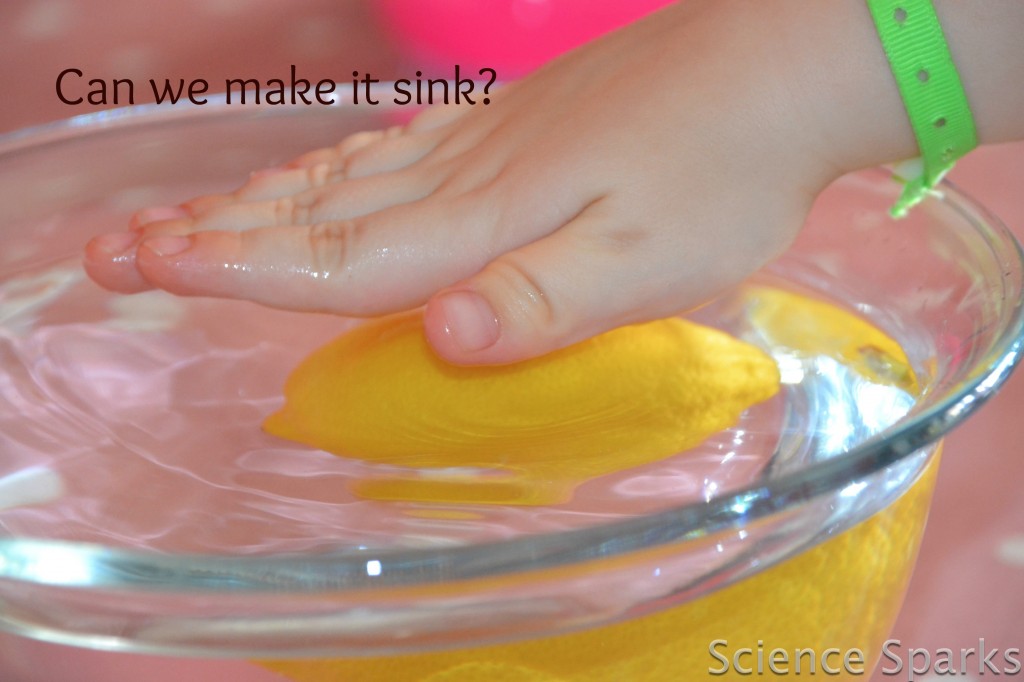
Top tip – remove the skin to make a lemon sink!
Transforming Milk and Cream
Finally, how about turning milk into glue ? Or cream into butter ?
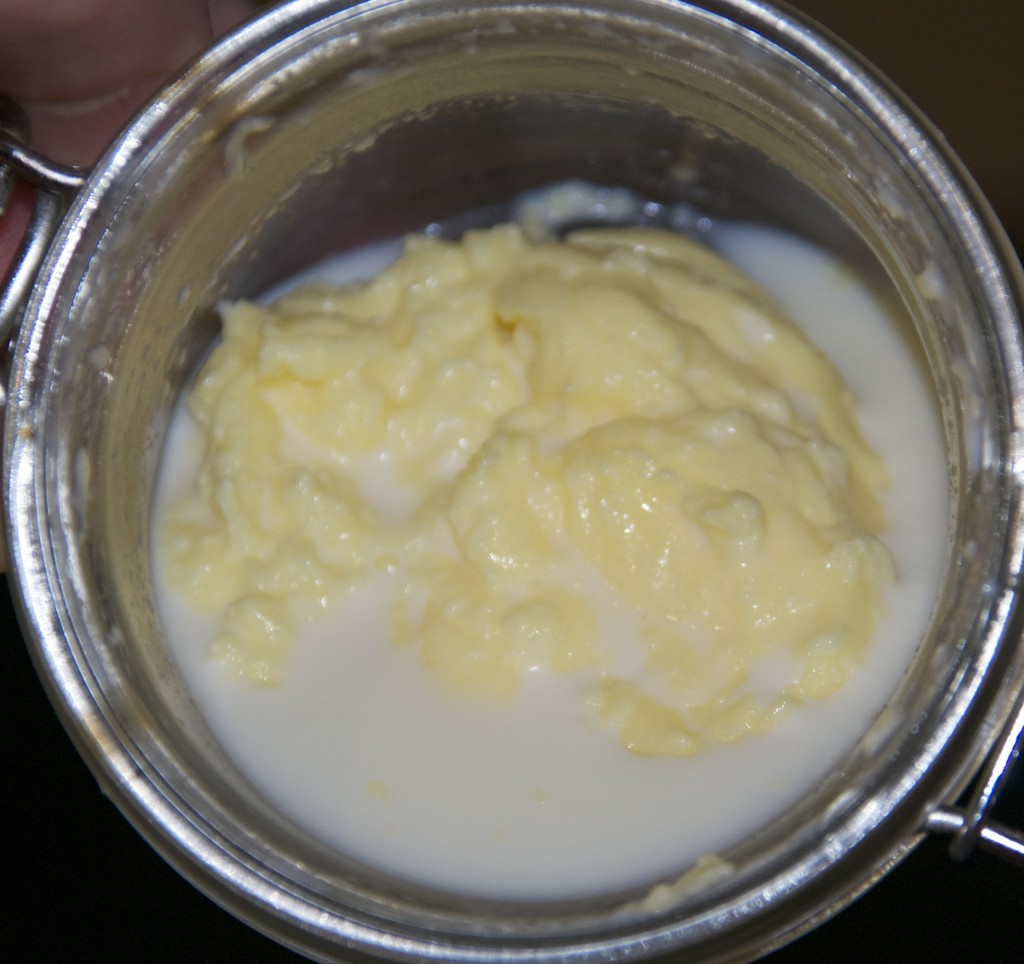
Cool a Drink in 3 Minutes
Chill a room temperature drink in 3 minutes using ice, salt and water! This is a great trick for a hot day. The same science is used to make ice cream in a bag .
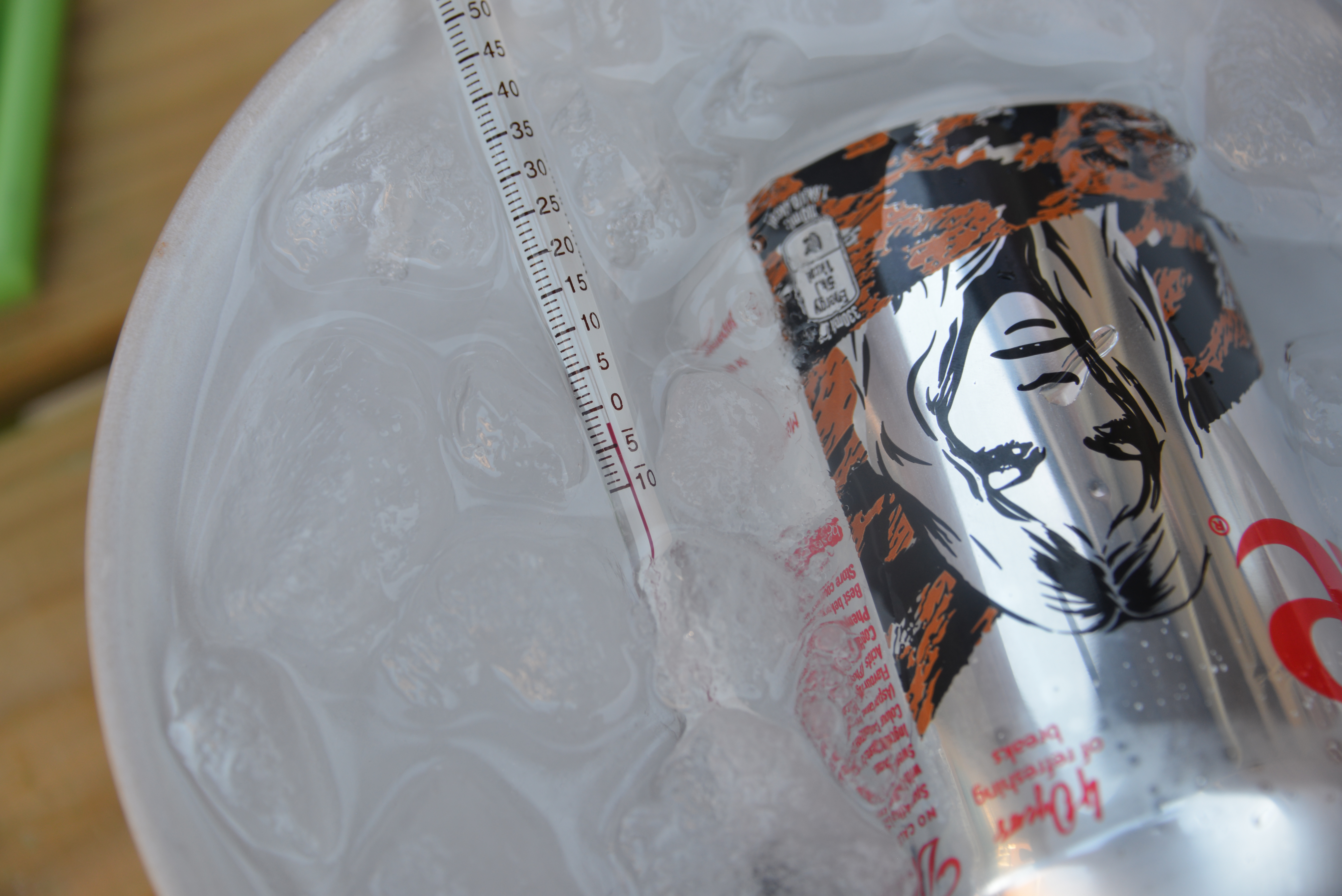
Make an Unpoppable Balloon
Adult Supervision is needed for this trick
Find out how to put a balloon in a candle flame without it popping !
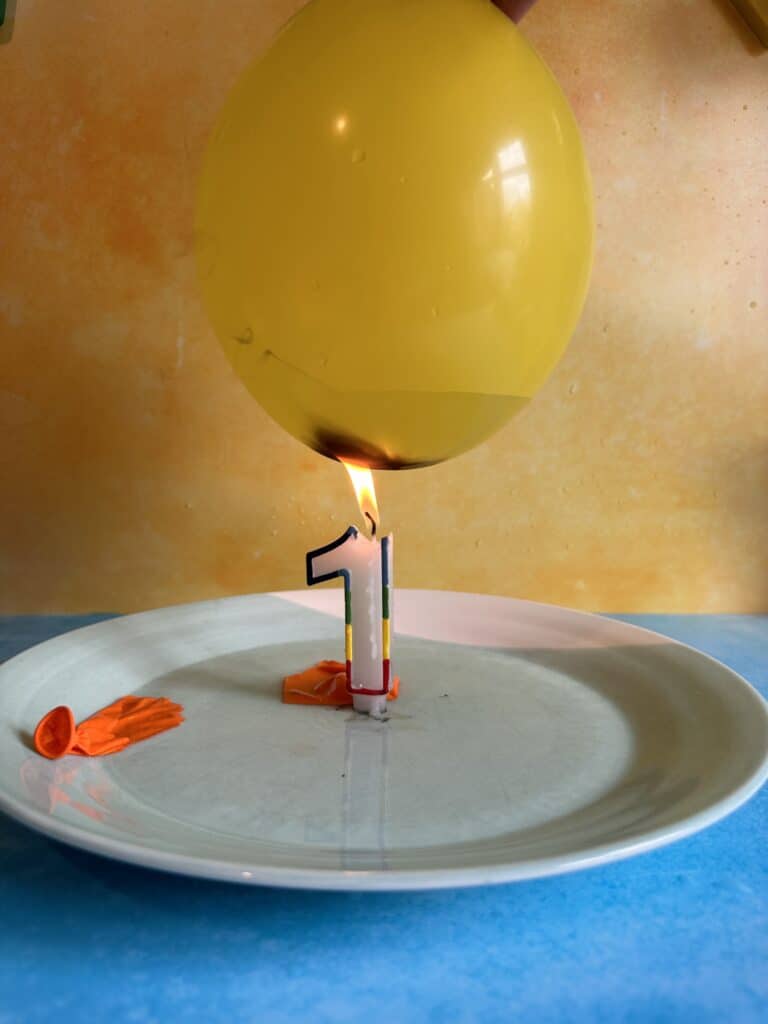
Do you have any more science tricks for us?
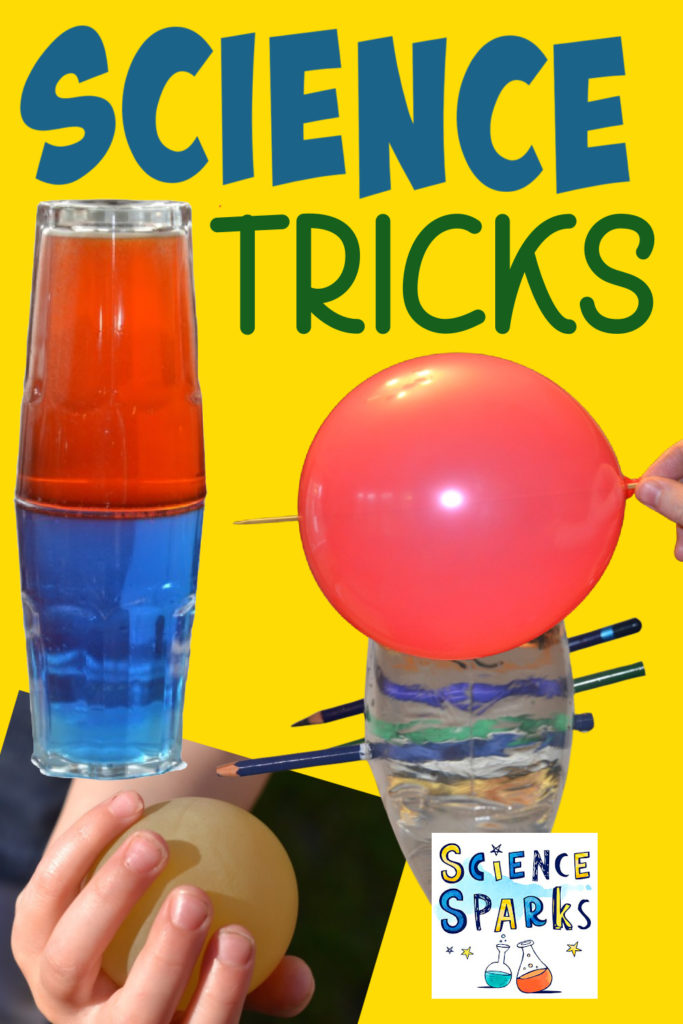
Last Updated on April 18, 2024 by Emma Vanstone
Safety Notice
Science Sparks ( Wild Sparks Enterprises Ltd ) are not liable for the actions of activity of any person who uses the information in this resource or in any of the suggested further resources. Science Sparks assume no liability with regard to injuries or damage to property that may occur as a result of using the information and carrying out the practical activities contained in this resource or in any of the suggested further resources.
These activities are designed to be carried out by children working with a parent, guardian or other appropriate adult. The adult involved is fully responsible for ensuring that the activities are carried out safely.
Reader Interactions
March 28, 2013 at 8:35 am
I am intrigued by those egg ones! How cool.
March 30, 2013 at 3:04 pm
Brilliant. I am signing. Up to your blog! 🙂
April 03, 2013 at 4:21 am
I think all of these experiential are so cool and captivating making me want to do some of them. I think the experiments you used are great since it’s fun and quite easy so mostly anyone can attempt making a replica of the project.
August 28, 2021 at 9:57 am
Activities like these can make learning so much fun for kids, it can even spark their enthusiasm towards science. Thanks for sharing these ideas!
Leave a Reply Cancel reply
Your email address will not be published. Required fields are marked *

- BOREDOM BUSTERS
5 magic science experiments for kids
These tricks will make your children think they have superpowers—but it’s really all about the science.
When Rachel Díaz of Culver City, California, “magically” refilled a soda can for her son, the nine-year-old’s first words were “Cool!” And then: “How’d you do that?”
Science-based magic tricks stand out not just for being fun but for sparking interest in the science that makes the trick happen. “Making science fun is essential to creating the most important aspect of learning: desire,” says Steve Hinkley, president and CEO of the Adventure Science Center in Nashville, Tennessee. “When children find joy in something, they seek more of it.”
Studies show that students in science and math learn best when they participate in the lesson. These simple “magic tricks” help children understand scientific topics by learning how each trick works. Abracadabra … you’ve made fear of science disappear!
Refill an empty can—without any liquid.

You’ll need: • Sealed soda can • Needle or pin • Drinking glass
What to do: Have kids stand over the sink and pierce the can’s top half with the needle. Drain about half the soda into a glass. Crush the sides of the can until it looks empty.
Tell kids to hold the can with one finger over the hole—then shake. The can will look like it’s “magically” refilling! (Keep that sink handy—it can get messy.) If they’re performing this for an audience, have them pop the top and take a sip.
Cool science: Of course, the can isn’t refilling with soda—but thanks to carbonation, it’s refilling with gas. Carbonation is the process of dissolving carbon dioxide into a liquid. To do this in things like soda, scientists use pressure to dissolve the carbon dioxide and seal the can to keep the pressure in. Popping the top releases the pressure so the gas escapes. But shaking a sealed soda causes the dissolved carbon dioxide to bubble out of the liquid and become gas once again.
Because there’s no place for the gas to go in a sealed can, the carbon dioxide builds up. That’s why soda will explode in your face if it’s shaken before opening. It’s also why—if half the liquid has been drained and a finger is over the hole when the crushed can is shaken—the gas pushes outward on the crumpled sides of the can so it appears to be filling up.
Put an egg inside a bottle—without touching the egg.

You’ll need: • Hard-boiled egg (peeled) • Glass bottle with an opening slightly smaller than the egg • Long matches or a long lighter • Candle or strip of thick paper, such as newspaper or construction paper
What to do: Have kids lower the candle or strip of paper into the bottle, then light it for them. They can then place one end of the peeled egg over the mouth of the bottle. When the flame goes out, the egg should slowly slide into the bottle.
Cool science: Kids aren’t pushing the egg into the bottle—instead, it’s being pulled inside thanks to air density. Air is made up of tiny pieces of matter called molecules. When the molecules are farther apart, the air’s density—the amount of matter in a given space—decreases as the air expands. When the molecules are closer together, the air density increases as the air contracts.
When you light the paper, the air molecules inside the bottle warm up and move around, which expands the air and decreases the air’s density. But when the fire goes out, the air suddenly cools—the molecules slow down and move closer together, increasing the density so the air takes up less space. Usually the air outside the bottle would rush in to fill this space—but now the egg is in the way! Instead, the air pressure outside of the bottle pushes the egg into the bottle.
(For a little extra magic, have kids hold the bottle upside down and—with their mouths sealed over the bottle opening—blow. The egg should fly out.)
Push a straw through a potato—no superstrength needed.

You’ll need: • A straw (Paper straws won’t work, but plant-based “plastic” straws will.) • A raw potato (You can still cook it later!)
What to do: Have kids hold the straw in one hand and the potato in the other, and try to pierce the potato. (They might nick the skin—but that’s it.) Now have them move their thumb over the straw’s opening and use the other end to stab the potato. This time, it should sink right in.
(Biodegradable plastic straws can be composted. If you used an actual plastic straw in the name of science, upcycle it into an art project or recycle it by placing it in a container made of the same type of plastic before recycling.)
Cool science: The first time the child stabs the potato, air goes in one end of the straw and out the other. But when the opening is covered with the kid’s thumb, the air is trapped with no place to go. So now as the child drives the straw into the potato, they’re compressing —or squeezing in—the air in the straw. As this happens, the air begins to press outward … making the sides of the straw stronger and firmer. And the farther the straw plunges, the more the air is compressed.
Puncture a bag full of water—without any leaks.

You’ll need: • Sealable plastic bag (Perhaps repurpose one you just used.) • Water • A really sharp pencil
What to do: Have kids fill the plastic bag with water and seal it. In one motion, firmly poke the pencil into the bag. (Try just one side to start, but if you poke fast enough the pencil should go all the way through without leaks.) See how many pencils kids can add before the bag leaks.
Cool science: Polymers are large molecules made of repeating chains of small, simple chemicals. The polymers in plastic bags are human-made and have been developed to be weak but flexible. Because they’re weak, the polymers separate when the bag is stabbed with the pencil. But because they’re flexible, the polymers quickly form new chains and create a seal around the pencil, preventing water from escaping.
Make an empty can roll—without ever touching it.

You’ll need: • Empty soda can • Blown-up balloon • A person with hair
What to do: On a smooth surface, have kids place the empty can on its side, then let them rub the balloon through someone’s hair. When they hold the balloon near the can, the can will start to move toward the balloon.
Cool science: Most things emit small electric charges, both positive and negative. Rubbing a balloon across your hair causes tiny, negatively charged particles called electrons to move from your head to the balloon. The metal can is made of particles that have both negative and positive charges. Because negative and positive charges attract each other, when a kid places the negatively charged balloon near the can, it attracts the can’s positively charged particles, called protons. That’s why the can will roll toward the balloon.
Related Topics
- SCIENCE AND TECHNOLOGY
You May Also Like

Science experiments that will make your kids’ curiosity bloom

How slimes and squishies soothe children in times of stress

Art is good for your kids—and here’s the science why

5 science experiments kids can do on themselves
- Terms of Use
- Privacy Policy
- Your US State Privacy Rights
- Children's Online Privacy Policy
- Interest-Based Ads
- About Nielsen Measurement
- Do Not Sell or Share My Personal Information
- Nat Geo Home
- Attend a Live Event
- Book a Trip
- Inspire Your Kids
- Shop Nat Geo
- Visit the D.C. Museum
- Learn About Our Impact
- Support Our Mission
- Advertise With Us
- Customer Service
- Renew Subscription
- Manage Your Subscription
- Work at Nat Geo
- Sign Up for Our Newsletters
- Contribute to Protect the Planet
Copyright © 1996-2015 National Geographic Society Copyright © 2015-2024 National Geographic Partners, LLC. All rights reserved
5 Amazing Magic Tricks That You Can Perform Using Science
Vanishing water, burning money, traveling flame trick, levitating disc, thunder in a bottle.
The difference behind magic and science is just a matter of perspective. Learn how to perform cool tricks that have a simple scientific idea at their core.
Imagine that you’re suddenly standing in the middle of the street in 14 th century Victorian England. Wondering where you are, you decide to whip out your phone and try to get a signal, when a passing child spots your phone.
Nowadays, it’s quite common for us to use cell phones on a daily basis, but for people who haven’t ever seen a light-bulb, the moving images in your hand would be considered magic. While you’re left there cursing your network provider, the villagers would have lined up with pitchforks and torches!
Similarly, magicians have been amazing audiences for centuries with new ‘tricks’ employing scientific ideas in a non-conventional manner. Every magic trick can likely be explained if the right ideas are identified. Although a magician never reveals his secrets, the whole point of being a scientist is explaining ideas.
This is a great way to spoil magic tricks without facing any criticism from fellow magicians. This article will teach you how to perform some mind-boggling ‘magic’ tricks and learn about the science that makes them possible.
Recommended Video for you:
A magician takes an ordinary looking cup, pours some water into it after a series of gestures and appears to make the water disappear. The viewer is left speechless when the cup is flipped over and no water drips out, as if it has vanished into thin air. Watch the video demonstration here.
The Science:
The method isn’t that much of a revelation, since it make use of an easily available compound called Sodium Polyacrylate . This is a ‘hygroscopic’ substance, which means that it acts like a sponge and absorbs water almost instantly. Baby diapers contain this compound to absorb moisture more easily. When the cup is lined with this substance, any water that comes in contact with it forms a mixture that is a solid gel. Unassuming audiences think that the water has suddenly disappeared, when in fact the mixture is simply stuck to the base of the cup.
The magician takes a small currency note and tells the audience that he is going to light it on fire. Then he takes a lighter or a candle in one hand and lights the bill aflame. The fire then goes out, leaving the bill unharmed and the audience spellbound.

The bill used in this trick is not an ordinary currency note. Prior to the trick, it has already been doused in an alcohol-water mixture. When the bill is lit, the alcohol is what actually burns , while the note remains unharmed. This is because the temperature at which the alcohol burns is not high enough to cause the water to evaporate. The bill remains wet and isn’t able to catch fire on its own. Don’t attempt this trick at home, not only because it’s highly dangerous, but also because money comes in handy when you’re off buying magic wands.
Also Read: Why Does A Candle Only Produce Smoke When It’s Extinguished?
The magician lights a candle with a lighter or a match in front of the audience. He then blows out the flame and immediately places the flame from a matchstick or a lighter into the smoke. To the amazement of the onlookers, the flame travels down the smoke and relights the blown-out candle. You can watch the actual trick in the gif below.
The candle and matchsticks involved are ordinary in all respects. The only thing extraordinary is the way candles work . As we all know, the heat from the flame of a burning candle melts the wax around it. However, not only does the wax melt, but some part of it also vaporizes and remains inside the smoke for a while after you blow out the flame. If a heat source like a matchstick is applied quickly enough to this vapor, it can ignite the wax and travel down the vapor to the actual candle wick.
A magician pulls out a disc from a container and puts it onto a track he has laid out on a table. The disc begins levitating, even though it’s completely composed of non-magnetic substances.
Everyone knows that you can levitate objects using a magnet, but there’s only a certain degree of freedom with magnetic levitation. Since magnets can only attract or repel each other and not fix them in place, levitating objects for long periods is difficult. In this trick, magicians employ the help of superconductors that interact with magnets in a weird manner called ‘ Quantum Levitation ’.
This can be achieved when scientists cover an object with a thin layer of a superconductor that has been cooled to an extremely low temperature. What happens next is straight out of a sci-fi movie, because the track, which is made up of magnets, actually locks the disc in the desired path, levitating it like a UFO!
A magician takes some sugar-like crystals and puts them in a transparent jar. He then asks an audience member to turn off the lights, barely allowing them to see. He then takes a hammer and starts crushing the crystals with the butt of the hammer. The jar lights up like a thunderstorm as soon as the force of the hammer disintegrates the crystals inside!
The sugar-like crystals are actually a compound called europium tetrakis , which exists as a sugar-like substance at room temperature. The most interesting thing about these crystals is that when they disintegrate, they convert the kinetic energy from the hammer directly into light energy. Other substances normally convert kinetic energy into heat, which is why they don’t glow. Like europium tetrakis, sugar also has the same effect, although to a lesser extent. You could certainly give a whole different meaning to a “sparkly smile” in this way. Just chew on some sugar in the dark and you’re golden!
Next time you watch Harry Potter, keep an encyclopedia of science handy. Your friends will probably never invite you to a movie marathon again, but hey… at least you’ll know that the reason behind the failure of the trick is not an incorrect pronunciation of ‘ Wingardium Leviosa ‘.

Also Read: 10 Fascinating Chemical Reactions That Will Blow Your Mind
- lightning experiments - National Weather Service. The National Weather Service
- Make a Candle Flame Jump - Scientific American. Scientific American
- Vanishing Water - Chemistry LibreTexts. LibreTexts
Harsh Gupta graduated from IIT Bombay, India with a Bachelors degree in Chemical Engineering. His pedantic and ‘know-it-all’ nature made it impossible for him not to spread knowledge about (hopefully) interesting topics. He likes movies, music and does not shy away from talking and writing about that too.

How The Great Depression Gave Birth To Gravity-Defying Mystery Sites

How To Freeze Water Using Fire?

How Do Lighters Work?

Without Magic, Could You Get Through Platform 9 ¾?

Why Does Sugar Disappear When It Dissolves In Water?
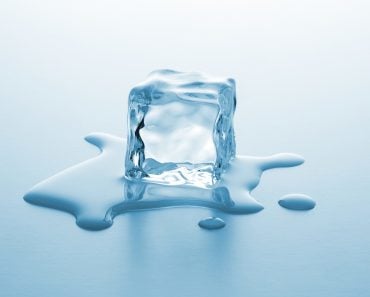
What Is Latent Heat?

What Happens When You Throw Boiling Water Into Freezing Air?

Mirage: Why Does It Look Like There's Water On The Road?

Quantum Entanglement: Explained in REALLY SIMPLE Words

Entropy : Why is it Predicted to Cause the Heat Death of the Universe?

Quantum Observer Effect: Can 'Looking' at Something CHANGE Reality?
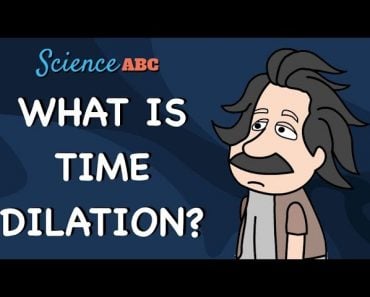
Time Dilation - Einstein's Theory Of Relativity Explained!
Browse links
- © 2024 BuzzFeed, Inc
- Consent Preferences
- Accessibility Statement
35 Science Experiments That Are Basically Magic
For everyone who hasn't gotten their Hogwarts letter yet.

BuzzFeed Staff
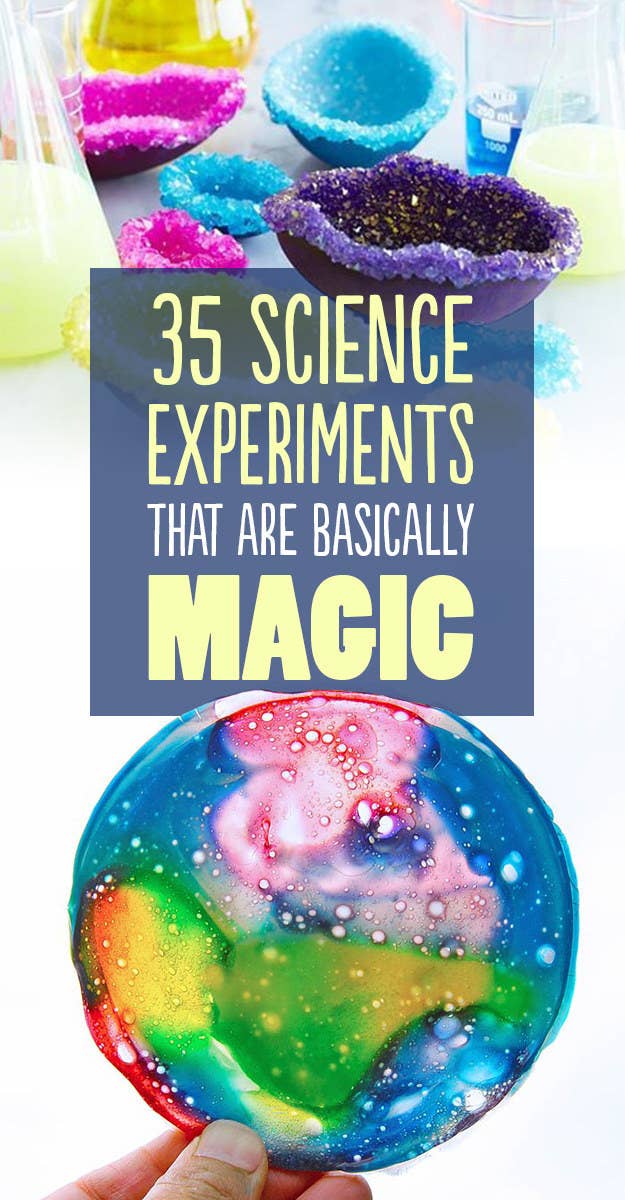
1. Explode a watermelon in your backyard.
As it turns out, watermelons can't survive under pressure.
Get the tutorial at KayeSquad .
2. Learn about chemical reactions with a lemon volcano.

Not only is this experiment cool, but it also smells good!
Get the tutorial at Babble Dabble Do .
3. "Marinate" gummy worms in a concoction that turns them into "electric eels."

They're ALIVE!
Get the tutorial at Bitz & Giggles .
4. Add a Mento to different types of soda and see which one has the biggest explosion.
Sprite, ginger ale, root beer... what's your prediction?
Get the tutorial at Olivia's Looms and Crafts .
5. Study heat sensitivity using color-changing slime.

Thermochromic fun.
Get the tutorial at Left Brain Craft Brain .
6. Make rainbow paper and discover how light reflects on a surface.

The paper looks so cool you'll be tempted to frame it!
Get the tutorial at Science Kiddo .
7. Play with glow-in-the-dark magic mud.

It's made using a potato! Whatttttttttt.
Get the tutorial at The King of Random .
8. Explore the process of precipitation with a raincloud in a jar.

You could make it rain *inside* when it's actually raining *outside*.
Get the tutorial at The Happy Housewife .
9. Or use a jar to make fireworks.

Ooooooh! Ahhhhh!
Get the tutorial at I Can Teach My Child .

10. Turn an egg into a bouncy ball.
To be specific, a bouncy ball that *glows*.
Get the tutorial at HooplaKidzLab .
11. Cool down with a slushie made without a blender.

Created with "magic" ice cubes.
Get the tutorial at Reading Confetti .
12. Take a bath with fizzing dough.

An awesome and effervescent way to get clean.
Get the tutorial at Tried & True .
13. Construct a whirlygig and watch the colors blur into a rainbow as it spins.
Round and round and round.
Get the tutorial at The Craft Train.
14. Make some candy that looks like glass.

"Kids, come quick! Elsa's been here!"
Get the tutorial at Simply Designing .
15. Transform egg shells into glimmering "geodes."

What's the "magical" ingredient that makes the crystals form? Alum powder!
Get the tutorial at Sweet Paul .
16. Get artistic with marshmallow paint.

It's edible, so anyone who gets some on their fingers can just lick it off!
Get the tutorial at Smart School House .
17. Create a sun catcher using slime.

Step one: Have an awesome time using slime. Step two: Put all the leftover slime to good use.
18. Use a plastic bag to make a jellyfish in a jar.
An aquarium you don't have to clean!
Get the tutorial at BhoomPlay .
19. Turn puddle jumping into an art form.

There are few things as satisfying as a good puddle splash.
Get the tutorial at Lemon Lime Adventures .
20. Or make rain art on paper.

Color with markers and then let the precipitation do the rest of the work.
Get the tutorial at Pink Stripey Socks .
21. Blow someone's mind with milk, food coloring, and soap.
Marbleized magnificence.
Get the tutorial here .
22. Teach kids about magnetism using slime.

This looks like something you'd see oozing around a haunted house in a scary movie (which means kids will find it *very* cool).
Get the tutorial at Frugal Fun For Boys .
23. Spray watercolors on wax paper and see what patterns show up.

Every step of this project is fun and the results are beautiful.
Get the tutorial at Housing A Forest .
24. Blow a bubble cube.
25. or make some bubbles that bounce..
Boing, boing, boing!
Get the tutorial at CrazyRussianHacker .
26. Use your freezer to make a glassful of magic crystals.

❄️❄️❄️❄️❄️❄️❄️❄️❄️❄️❄️❄️❄️
27. Or make a crystallized version of a word.

Seeing your name in lights < seeing your name in crystals.
Get the tutorial at Playdough To Plato .
28. Or a crystallized rainbow.

Borax is basically magic powder.
Get the tutorial at Hello, Wonderful .
29. Squeeze an egg into a bottle.
Get the tutorial at Sick Science .
30. Round up all the crayon bits and pieces around the house and turn them into crayon wands.

Coloring is always magical, but even more so when you use one of these.
Get the tutorial at Kids Activities Blog .
31. Turn the night sky into slime.

Or make some slime that *looks* like the night sky. Hey, it's almost the same thing!
Get the tutorial at Two Daloo .
32. Assemble a homemade lava lamp in a bottle.
Oh so groovy.
33. Paint with moon dust.

For artwork that's sure to be out of this world.
Get the tutorial at Learn Play Imagine .
34. Mix up a rainbow that 💥EXPLODES💥.

Chances are you already have the ingredients for this experiment in your kitchen.
35. Make ice ~instantly~.
🎶Let it go, let it go...🎶
Share This Article
500% more EV range: Panasonic's 4680 battery to skyrocket electric vehicle efficiency
Dark matter, regular matter can interact without gravity, hints study.
12 hours ago
Samsung unveils world’s first ultra-small solid-state battery for wearables
11 hours ago
US breakthrough in sodium-ion batteries: New method enables 400 cycles
10 hours ago
Science sees miracle as first-ever single electron carbon bond spotted
9 hours ago
10,000 gold, bronze relics buried beneath elephant tusks found in China
39,000-year-old mammoth carcass hints earliest human presence in arctic.
8 hours ago
Near 1,000-year-old 50 Viking skeletons discovered, reveal old burial customs
6 hours ago
China launches first 'reusable' satellite Shijian-19 for seed science research
'world-first' ruby grown in situ from gem waste can transform jewelry industry.
5 hours ago
Free solar panel scheme hits one million kilowatt-hour clean energy milestone
16 minutes ago
Could bison help overcome cow methane?
2 hours ago
New device for ultra-clean water aims to boost hydroponics, sustainable agriculture
4 hours ago
These 11 Physics Experiments Are Indistinguishable from Magic
Science demonstrations remind us of the breathtaking principles of physics that surround us at all times..
Chris Young

Famous sci-fi writer Arthur C. Clarke once wrote, “Any sufficiently advanced technology is indistinguishable from magic.” We would also argue that anyone with sufficiently advanced knowledge of physics is indistinguishable from a magician.
Whether it’s seemingly forming a tornado out of thin air, making a ball levitate, or peeling fruit in a split second, the laws of physics can make for a great show. Here are some of the best examples we could find.
RELATED: PHYSICS PROFESSOR SHOWS HOW YOU CAN TURN DULL PHYSICS CLASSES INTO THE MOST ENTERTAINING THING EVER
1. The Magnus Effect
This individual used the Magnus effect with such precision that it looks like he sent a homing missile towards a basketball hoop rather than a backspinning basketball.
As can be seen in the video below, a basketball, any ball or cylindrical object for that matter, can have a surprising trajectory when dropped with a certain amount of spin. This is the Magnus effect.
the Magnus effect in action from r/physicsgifs
The Magnus effec t is caused by the difference in pressure on either side of the ball caused by spinning as it falls through the air. The phenomenon was named after Heinrich Gustav Magnus, the German physicist responsible for investigating the effect.
2. The quickest way to peel an orange
Peeling oranges and tangerines takes precious seconds out of our daily routines. Ok, so this is a lazy lifehack if ever there was one. It does, however, show the effects that compressed air can have inside a small space.
How To Peel An Orange from r/physicsgifs
While this method isn’t likely to work on every attempt, Youtuber William Osman 2 put it to the test , and showed that it is, in fact, a fairly airtight way, ahem, to peel your fruit.
3. A Coca-Cola rocketship
We’ve all seen those Mentos and Coca-Cola experiments before, but have you ever seen the effects of adding butane gas into a Coca-Cola bottle? The effects are explosive to say the least.
Coke + butane gas = ? from r/physicsgifs
Butane is a nonpolar liquid at low temperatures, but it boils at about zero degrees celsius. When it is mixed with relatively warm Coca-Cola butane gas is created, leading to the rocket-like reaction seen in the video above.
4. Electrical patterns
Lichtenberg burning, as Woodturner.org describes , sees people apply an electrically conductive solution onto a piece of wood and then run high voltage electricity through it using a transformer and two probes.
Experimenting with electricity! from r/woodworking
The patterns created on the wood, known as Lichtenberg or fractal burns, are often created for their aesthetic appeal. It is important to note, however, that this experiment involves potentially lethal high voltage electricity and should not be tried at home.
5. A levitation trick?
In the field of fluid dynamics, Bernoulli’s principle — named after mathematician Daniel Bernoulli — states that an increase in the speed of a fluid occurs at the same time as a decrease in the fluid’s potential energy.
It is an integral principle in aerodynamics, as it describes how an aircaft can achieve lift due to the shape of its wings.
Bernoulli’s principle from r/physicsgifs
It can also be used for a more simple levitation trick. The fast air moving around the cylindrical duct tape is at a lower pressure than the surrounding air. The surrounding higher pressure air makes the object seemingly float in mid-air.
6. Bernoulli’s principle is at it again
We just had to add this one in here too. Bernoulli’s principle is once again used here to impressive effect, thanks to a leaf blower, a basketball, and a hoop.
After many requests here is the attempt to make it. from r/blackmagicfuckery
The levitation-like effects of the surrounding air pressure are on full display here as the ball is kept in place even with air being blown at it from an angle.
7. Static flight
Another way to seemingly make objects fly using science is via the Van de Graaff generator.
The Van de Graaff generator can be assigned to give a positive or negative charge. When it is turned on, any objects with the same charge will be repelled, as can be seen in the video below.
Static power! from r/blackmagicfuckery
The aluminum bowls placed on top of the generator have the same charge as the generator, causing them to be repelled and go flying into the air.
8. Constant velocity
The video below cleverly demonstrates the principle of constant velocity. The same principle explains why a person can jump inside a fast-moving vehicle such as a train or an airplane without going flying to the back of it. They are moving at the same speed as the vehicle.
Demonstration Of Constant Velocity With A Moving Trampoline from r/physicsgifs
Of course, factors such as wind resistance can play an important role. That’s why this trampoline demonstration was carried out using a slow-moving tractor.
9. Visualizing sound with physical objects
Did you know you can levitate very small objects using soundwaves? In fact, a group of researchers has even created a very clever “tactile” hologram using this principle.
In the video below you can see how sound waves are being used levitate small pellets in midair.
Levitating small objects using sound waves from r/physicsgifs
Or, low-frequency beats can be used to create this amazing visual effect on the smoke from a vape pen.
Speakers’ effect on vapor from r/physicsgifs
There is a multitude of experiments that can be carried out that allow us to visualize sound.
10. Angular momentum visualized with a Hoberman sphere
Hoberman spheres are excellent tools for demonstrating the conservation of angular momentum.
In the video below, Utah State University’s Professor Boyd F. Edwards spins the expanded Hoberman sphere, before pulling a string that makes it contract. This causes the spheres angular momentum to increase.
Hoberman sphere conservation of angular momemntum from r/physicsgifs
As Khan Academy points out, the conservation of angular momentum means that angular momentum is constant for an object with no net external torque.
This means that objects can change their shape and still conserve their angular momentum, as displayed by Professor Edwards and his Hoberman sphere.
11. Making an indoor tornado
You most likely know that adding dry ice to hot water creates a lot of smoke. As this smoke looks spooky and fog-like it has traditionally been used in theatre to set the tone or mimic weather for spooky scenes.
But did you know that using dry ice, hot water, and several fans is all you need to make an indoor tornado? Just take a look at the video below.
Making an indoor tornado from r/interestingasfuck
Put the fans on their highest settings, point them upwards and you’re all set. Film it wearing a robe, a magician’s hat and keep the fans out of shot, and all of your friends will think you’re a bonafide wizard.
As Albert Einstein once put it , “there are only two ways to live your life. One is as though nothing is a miracle. The other is as though everything is a miracle.” Physics teaches us how to understand the incredible principles and ‘miracles’ that constantly surround us. Some of these are so complex that we may never fully understand them — all we can do is marvel at them.
RECOMMENDED ARTICLES
The blueprint daily.
Stay up-to-date on engineering, tech, space, and science news with The Blueprint.
By clicking sign up, you confirm that you accept this site's Terms of Use and Privacy Policy
ABOUT THE EDITOR
Chris Young Chris Young is a journalist, copywriter, blogger and tech geek at heart who’s reported on the likes of the Mobile World Congress, written for Lifehack, The Culture Trip, Flydoscope and some of the world’s biggest tech companies, including NEC and Thales, about robots, satellites and other world-changing innovations.
POPULAR ARTICLES
72 million-year-old giant dinosaur skull weighing 600 pounds discovered, electricity generated from solar energy at night using breakthrough device, world’s strongest electric fields could be produced by heavy-ion collisions, iter’s first 5,200-ton vacuum vessel built to contain plasma for fusion reactions, related articles.

500% more EV range: Panasonic’s 4680 battery to skyrocket electric vehicle efficiency

6 Science Magic Tricks to Learn
Is it magic or science?
Wayne N. Kawamoto is a full-time professional magician and author who has written about magic tricks and techniques for over 10 years. He is the author of "Picture Yourself As a Magician." Wayne also performs at corporate events and has entertained audiences for the Los Angeles Dodgers, Northrop Grumman, and Target Corporation.
:max_bytes(150000):strip_icc():format(webp)/Wayne-Kawamoto-about02-56a5d73e3df78cf7728a22c5.jpg)
Science magic tricks look like magic —an effect with a secret—but that secret is based on a scientific principle or concept that makes it look like a magic trick. With the help of chemistry or physics, "magic" is "science" and "science" is "magic"!
Some of the tricks are actually stunts that are science lessons, while others are tricks that have secrets based on scientific principles. And still others are simply optical illusions or exploit a quirk in mathematics.
You can perform science magic tricks as straight-out tricks or use them as opportunities to teach scientific concepts. Either way, they're fun to learn and are sure to amaze your audience.
Steel Straw
Wayne Kawamoto
In this science magic trick, an ordinary straw penetrates deeply into or through an apple or potato. All you have to do is thrust the apparently flimsy straw through the apple.
But how can a simple plastic straw—it may be examined before and after—become so rigid? The answer lies in a simple technique that takes advantage of air pressure and good aim. You'll know the trick but your friends won't be able to reproduce it easily.
- How to Do It Hold the straw in your dominant hand.
- Grasp it near the end so you can unobtrusively cap the end with your thumb and trap the air inside.
- Swiftly stab the apple or potato with the straw.
Why It Works When the straw encounters the hard surface of the fruit or tuber, air gets trapped inside the straw. This stiffens the straw so it can pierce through the flesh. Once through, the air is released and the straw will be flexible again.
When the straw encounters the hard surface of the fruit or tuber, air gets trapped inside the straw. This stiffens the straw so it can pierce through the flesh. Once through, the air is released and the straw will be flexible again.
The tube magic trick relies on a visual principle that warps perception and fools the brain. It's a brilliant optical illusion that encourages assumption on the part of spectators, and that's what shrouds the secret. They'll never suspect that there are ribbons or handkerchiefs hidden inside until the big reveal!
This one is not only a great magic trick for kids but it's also an excellent craft activity. Kids can make the tube out of household materials and decorate it as they wish.
The Bill Drop
The bill drop is more of a challenge than a magic trick, but the secret is all science, combining the physics of gravity with human physiology. To perform it, you'll ask a spectator to simply grab a bill before it falls out of reach. Despite the spectator's best efforts, the bill will always fall to the floor.
You can even make it a bet that if they catch the bill, they can keep it. This can be quite dramatic if you are using larger denomination bills.
- Hold the bill by your thumb and forefinger from the top end.
- Have your challenger place a finger on either side of the bill near the lower end, without touching the bill.
- Tell your challenger to catch the bill between their fingers when it drops.
Due to gravity, an object will fall at 9.8 meters per second. The human reaction time between perceiving something with the eye and responding with action is 0.2 seconds.
It is therefore impossible for the challenger to respond in time because the bill will fall 20 centimeters in 0.2 seconds and U.S. bills are 15 centimeters in length. The bill will simply be out of the challenger's reach before they can react.
Vanishing Water
Wayne Kawamoto
It's surprisingly easy to make water to vanish before your spectators' eyes. For this magic trick, you will pour water into a cup then turn the cup over. To everyone's surprise, no water will pour out!
The secret to this trick is the basic principle of water absorption thanks to a common compound found in a few everyday items. As long as you don't tell, you'll be the only one who knows about it.
Floating Metal
This science magic trick asks the question, "does metal naturally float on water?" When you know the secret (surface tension) and the right technique, the answer is, "Yes."
While your friends won't be able to get a paper clip to float, you will. That's because when they drop it into the water, it will disrupt the surface tension. You, on the other hand, will show them how using a bent paper clip allows you to place it on the surface where it will float perfectly.
Floating Metal trick from Tricks Wallet
The Afghan Bands
The Afghan bands trick (or paper bands trick) is incredibly simple. It's a classic magic trick that relies on topology (spatial relations in geometry) and a well-known concept called the Mobius strip, named after the 19th-century German mathematician, August Ferdinand Möbius.
In this science magic trick, you make loops out of paper strips and cut them down the center. The simple cut splits the with varying results: two separate rings, one long ring, or two interlinked rings. While it sounds rather ordinary, the results are sure to mystify an audience.
The Afghan Bands trick from Michael Breck at EzineArticles
More from The Spruce Crafts

- DIGITAL MAGAZINE
MOST POPULAR
5 magic science experiments for kids
These tricks will make your children think they have superpowers – but it’s really all about the science.
The best science experiments for kids are the ones featuring a bit of ‘magic’. These stand out not just for being fun, but for sparking interest in the processes that make the trick happen.
“Making science fun is essential to creating the most important aspect of learning: desire,” says Steve Hinkley, president and CEO of the Adventure Science Centre in Nashville, Tennessee. “When children find joy in something, they seek more of it.”
Studies show that science and maths students learn best when they participate in the lesson. So, these simple ‘magic tricks’ help kids understand scientific topics. First they’ll do the trick, then you can explain what makes it work. Abracadabra… you’ve made science fears disappear!
Magic science experiments for kids

1. Refill an empty can – without any liquid.
You’ll need :.
- – Sealed can of pop
- – Needle or pin
- – Drinking glass
What to do:
Have kids stand over the sink and pierce the can’s top half with the needle. Drain about half of the liquid into a glass. Then crush the sides of the can until it looks empty.
Tell kids to hold the can with one finger over the hole – then shake. The can will look like it’s ‘magically’ refilling! (Watch out, this can get messy.)
If they’re performing for an audience, once the can has ‘refilled’, have them open it and take a sip.
Why it works:
Of course, the can isn’t refilling with liquid – but thanks to carbonation, it’s refilling with gas.
Carbonation is the process of dissolving carbon dioxide into a liquid. In things like fizzy drinks, scientists use pressure to dissolve the carbon dioxide and seal the can to keep the pressure in. Popping the top releases the pressure so the gas escapes.
Shaking a sealed can causes the dissolved carbon dioxide to bubble out of the liquid and become gas once again. But, as there’s no place for the gas to go in a sealed can, the carbon dioxide builds up. That’s why the fizzy drink will explode in your face if it’s shaken before opening.
It’s also why – if half the liquid has been drained and a finger is over the hole when the crushed can is shaken – the gas pushes outward on the crumpled sides of the can so it appears to be filling up. Magic!
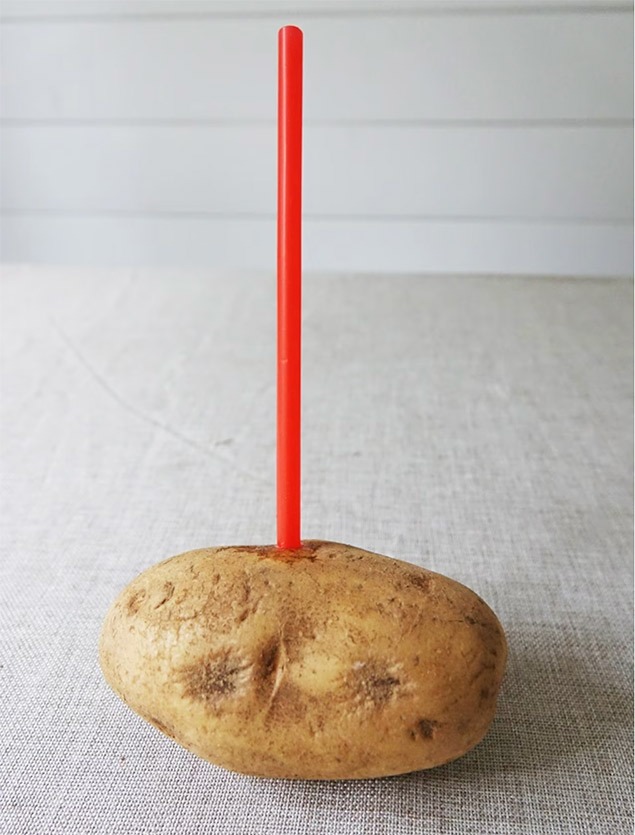
2. Push a straw through a potato – no super-strength needed.
You’ll need:.
- – A straw ( Paper straws won’t work, but plant-based ‘plastic’ straws will.)
- – A raw potato (You can still cook it later!)
Have kids hold the straw in one hand and the potato in the other. Ask them to try to pierce the potato. They might nick the skin – but that’s it.
Now have them move their thumb over the straw’s opening and use the other end to stab the potato. This time, it should sink right in. Hey presto!
If you’ve used a biodegradable plastic straw, you can now add it to your compost . If you used an actual plastic straw in the name of science, up-cycle it into an art project or recycle it by placing it in a container made of the same type of plastic before recycling.
The first time the child stabs the potato, air goes in one end of the straw and out the other. But when the opening is covered with a thumb, the air is trapped with nowhere to go. So now as the child drives the straw into the potato, they’re compressing – or squeezing in – the air in the straw.
As this happens, the air begins to press outward… making the sides of the straw stronger and firmer. And the farther the straw plunges, the more air is compressed.
Discover more fun science experiments for kids with a National Geographic Kids magazine subscription . Every issue includes stories of science, nature, history and culture, plus cool learning activities from games to crafts to experiments!
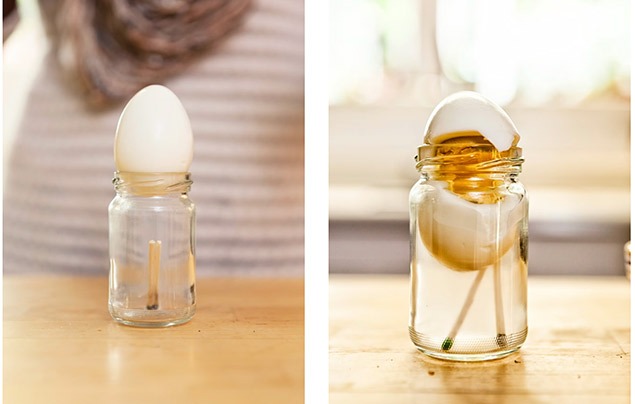
3. Put an egg inside a jar – without touching it.
- – Hard-boiled egg (peeled)
- – Glass jar with an opening slightly smaller than the egg
- – Long matches or a long lighter
- – Candle or strip of thick paper, such as newspaper or construction paper
Have kids lower the candle or strip of paper into the jar, then light it for them. They can then place one end of the peeled egg over the mouth of the jar. When the flame goes out, the egg should slowly slide inside.
Kids aren’t pushing the egg into the jar – instead, it’s being pulled in thanks to air density .
Air is made up of tiny pieces of matter called molecules. When the molecules are farther apart, the air’s density – the amount of matter in a given space – decreases as the air expands. When the molecules are closer together, the air density increases as the air contracts.
When you light the paper, the air molecules inside the jar warm up and move around, expanding the air and decreasing its density. But when the fire goes out, the air suddenly cools – the molecules slow down and move closer together, increasing the density so the air takes up less space.
Usually, the air outside would rush in to fill the space – but now the egg is in the way! Instead, the air pressure outside the jar pushes the egg inside.
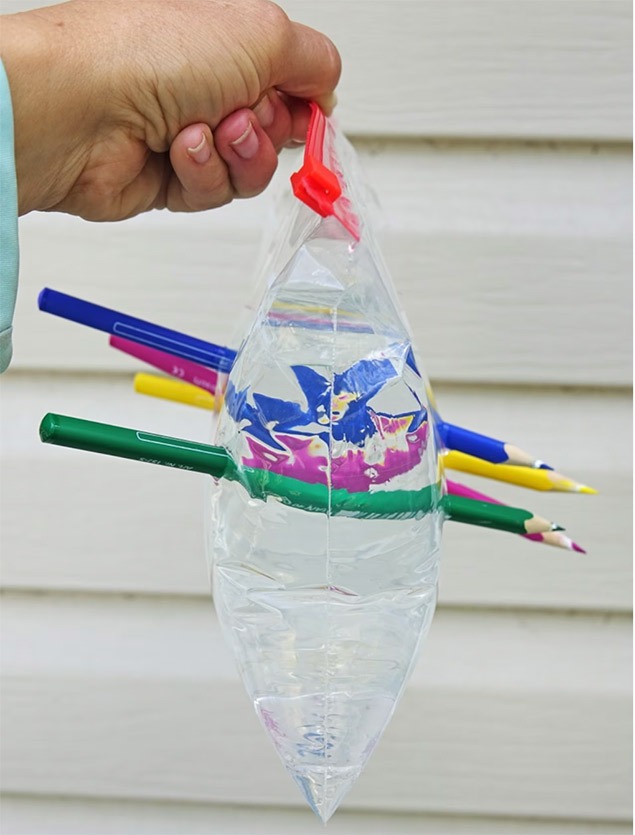
4. Puncture a bag of water – without any leaks.
- – Sealable plastic bag (Perhaps repurpose one you just used.)
- – Water
- – A really sharp pencil
Have kids fill the plastic bag with water and seal it. Then, in one motion, firmly poke the pencil into the bag.
Try poking through just one side of the bag to start, but if you poke fast enough the pencil should go all the way through without leaks. Once you’re confident, see how many pencils kids can add before the bag leaks.
Polymers are large molecules made of repeating chains of small, simple materials. The polymers in plastic bags are human-made and have been developed to be weak but flexible. Because they’re weak, the polymers separate when the bag is stabbed with the pencil. But because they’re flexible, the polymers quickly form new chains and create a seal around the pencil, preventing water from escaping.

5. Make an empty can roll – without ever touching it.
- – Empty pop can
- – Blown-up balloon
- – A person with hair
On a smooth surface, have kids place the empty can on its side, then let them rub the balloon through someone’s hair. When they hold the balloon near the can, the can will start to move towards the balloon.
Most things emit small electric charges, both positive and negative. Rubbing a balloon across your hair causes tiny, negatively charged particles called electrons to move from your head to the balloon.
The metal can is made of particles that have both negative and positive charges. Because negative and positive charges attract each other, when a kid places the negatively charged balloon near the can, it attracts the can’s positively charged particles, called protons . That’s why the can will roll towards the balloon.
For more kid-friendly activity ideas sent direct to your inbox, sign up to National Geographic Kids’ free email newsletter . You’ll receive positive news stories, articles from our parent section and more.
Looking for more ‘magic’ science experiments for kids? Check out these fun garden science activities !
Written by paige towler. egg photographs © matthew rakola; balloon over head © jgi / jamie grill / getty images; hair reaching balloon © lourens smak / alamy. all other images © shannon hibberd., leave a comment.
Your comment will be checked and approved shortly.
WELL DONE, YOUR COMMENT HAS BEEN ADDED!
Customize your avatar, more like this.
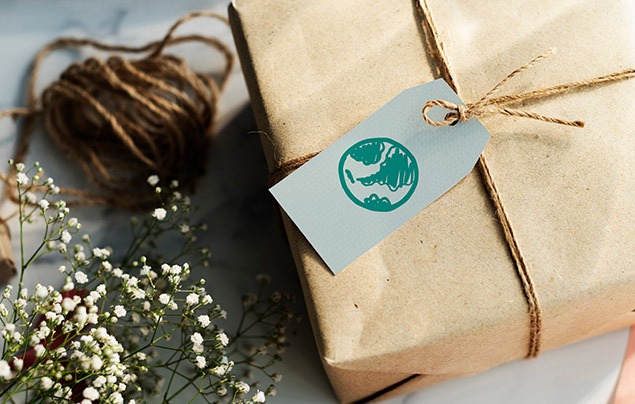
10 top sustainable gifts for kids
Here’s how kids can take bird photographs like a pro
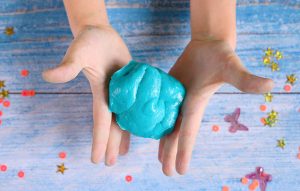
How to make eco-friendly slime!
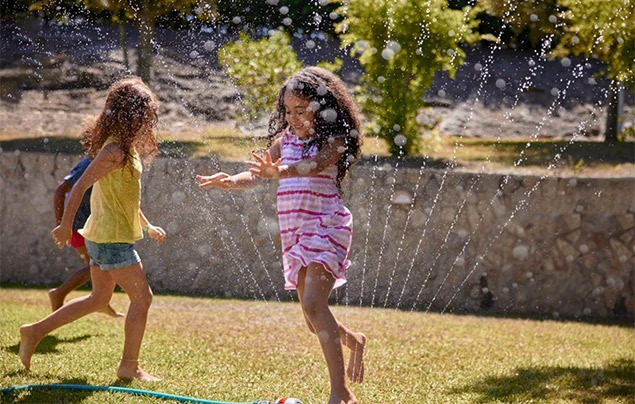
Beat the heat: 8 science-based hacks to keep cool
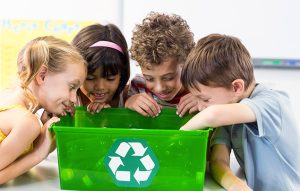
Help your kids make a difference with these easy eco-friendly ideas for schools

Sign up to our newsletter
Get uplifting news, exclusive offers, inspiring stories and activities to help you and your family explore and learn delivered straight to your inbox.
You will receive our UK newsletter. Change region
WHERE DO YOU LIVE?
COUNTRY * Australia Ireland New Zealand United Kingdom Other
By entering your email address you agree to our Terms of Use and Privacy Policy and will receive emails from us about news, offers, activities and partner offers.
You're all signed up! Back to subscription site
Type whatever you want to search
More Results

You’re leaving natgeokids.com to visit another website!
Ask a parent or guardian to check it out first and remember to stay safe online.

You're leaving our kids' pages to visit a page for grown-ups!
Be sure to check if your parent or guardian is okay with this first.
- Grades 6-12
- School Leaders
Get our mega Halloween worksheets bundle! 👻
Turn Muggles into Wizards With Harry Potter Science Experiments
Because sometimes science seems like magic.
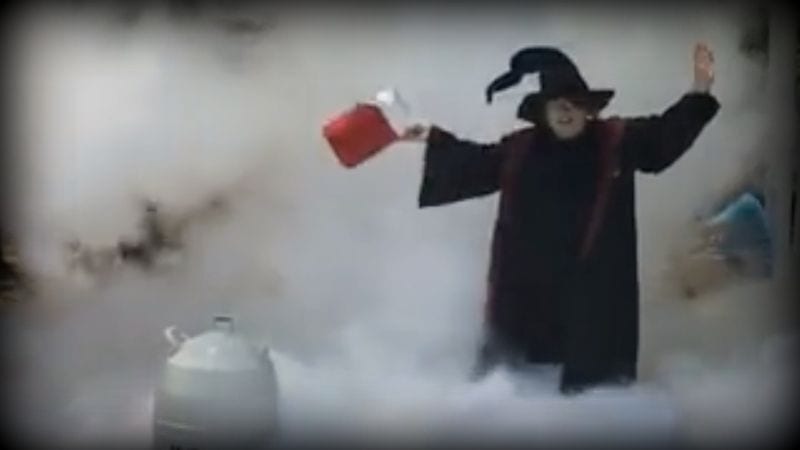
The spell of Harry Potter is one that seems destined to last from generation to generation, so take advantage of the books’ allure to teach the science behind magic. We got some bewitching tips from Sara Turner, Director of Awesome (yup, that’s her real title!) at the IMAG History & Science Center in Fort Myers, Florida. Sara runs Harry Potter camps that conjure up record attendance and rave reviews. Here are some of the Harry Potter science experiments and projects she uses along with other ideas from around the web. Accio learning!
Just a heads up, WeAreTeachers may collect a share of sales from the links on this page. We only recommend items our team loves!
Set up your Harry Potter science classroom.
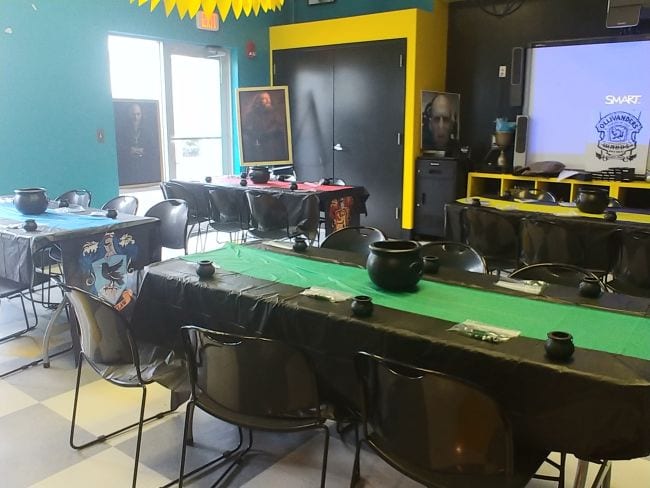
Turn your classroom into Hogwarts with a few simple touches. Use colored table runners to represent different houses. Give each student their own plastic cauldron (watch for them in stores around Halloween). Put up some of these Harry Potter bulletin boards or go all out like this magical teacher . Setting the atmosphere makes everything a little more fun!
Start with a sorting goblet.
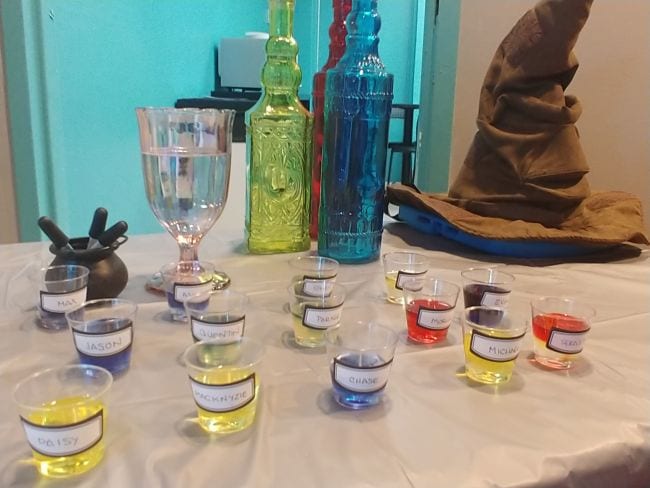
Sort your students into their houses by using chemical reactions. Each student receives a cup that contains a small amount of clear liquid. Then they add more liquid from the “sorting goblet” to the glass. Watch their astonishment as different colors appear! The magic is in the chemicals you’ve hidden in each glass in advance, activated by the special chemical in the goblet. Get all the supplies you need with this kit from Carolina Biological.
[contextly_auto_sidebar]
Make some magic wands.
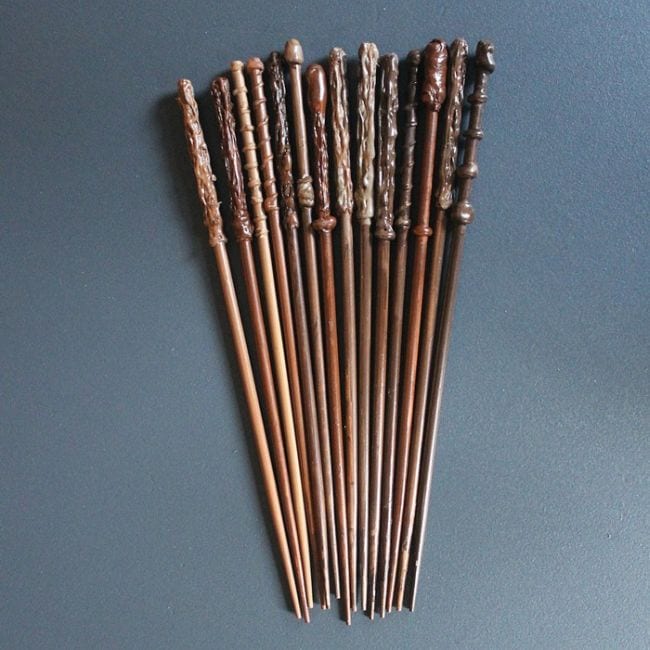
There’s no real science involved here, but every Hogwarts student needs a wand! Make them using chopsticks, hot glue, and paint, using these instructions from Boxy Colonial . Teachers should do the hot glue part in advance, creating the handles. Then kids paint them however they like and use them for their Harry Potter science experiments.
Build circuits to cast Lumos and Nox.
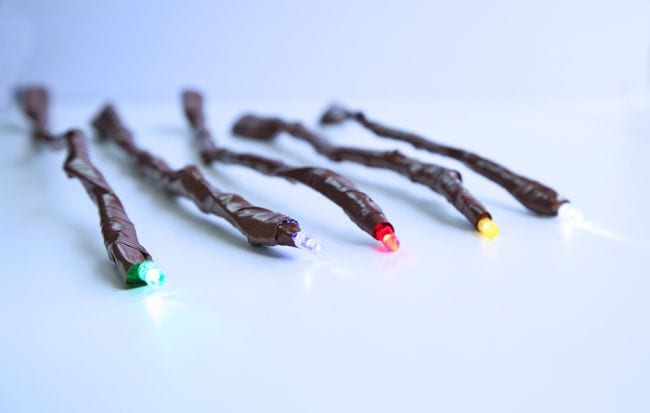
Kick your magic wands up a notch by adding simple circuitry and a small light. Babble Dabble Do shows you how.
Invest in a coding wand.
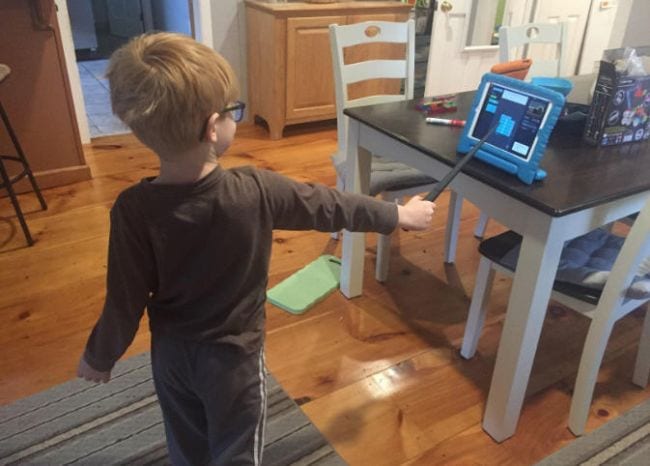
The Kano Harry Potter Coding Wand helps kids learn basic coding skills as they build a wand that responds to movement. No need for muggles to feel intimidated—the kit comes with clear instructions that anyone can follow to create Harry Potter science magic.
Create an “invisibility cloak” with refraction.
When Harry Potter dons his invisibility cloak, he becomes invisible to those around him. In the disappearing penny experiment, water poured into a cup seems to make the penny invisible. It seems like magic, but it’s really all about refraction of light . Maybe that’s how Harry’s cloak worked too!
Then use refraction to perform Revelio .
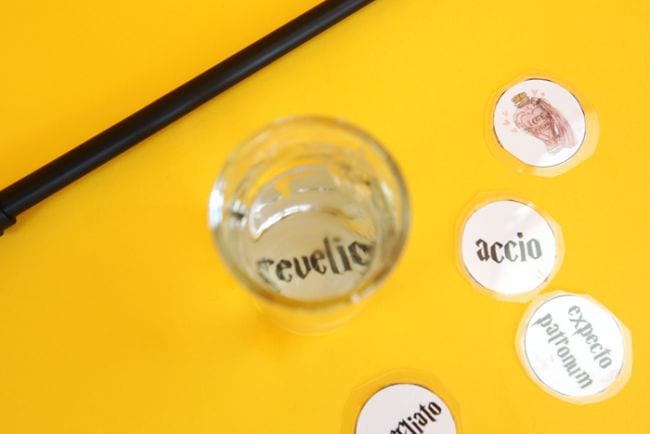
That same light refraction can be used to reveal objects as well, known to wizards as the Revelio spell. Learn how it’s done at Babble Dabble Do .
Use static electricity to cast Wingardium Leviosa .
Wizards shout “Wingardium Leviosa!” when they want something to levitate. Static electricity has the same effect! Check out this video for nine simple static electricity demos you can turn into Harry Potter science.
Pass out a potions handbook.
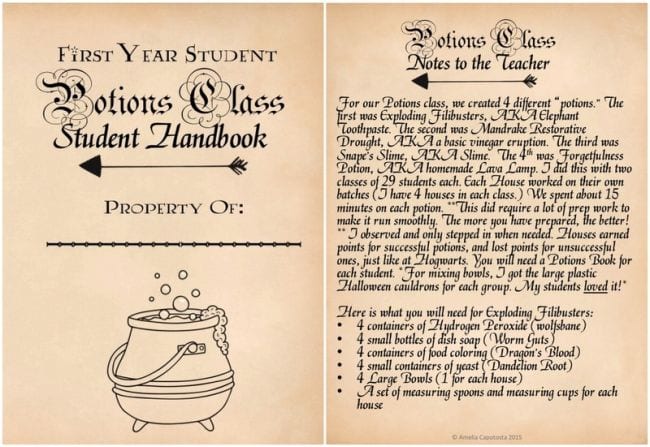
There are so many amazing chemical experiments you can turn into Harry Potter science “potions” that it’s hard to know where to start. Where the Wild Things Learn has a terrific free printable for student wizards and professors that includes Exploding Filibusters (commonly known as Elephant Toothpaste) and three other classic experiments with a magical twist.
Send magical messages in glowing invisible ink.
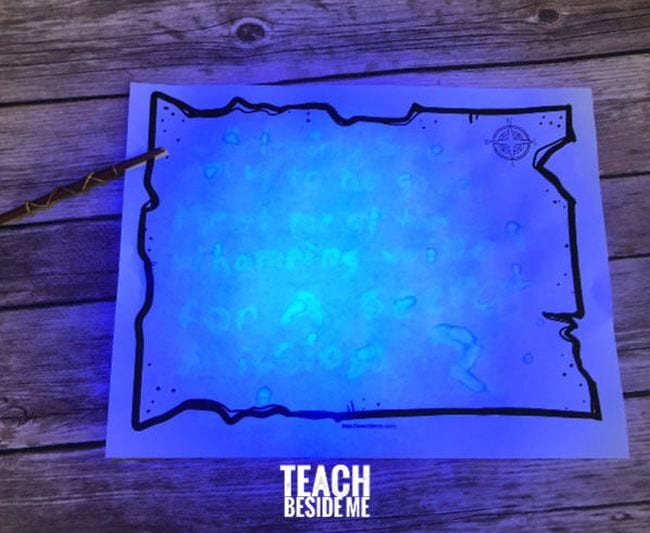
Tom Riddle’s diary and the Marauder’s Map both used invisible ink made visible by magic. You can perform the same science magic using the phosphorescence of laundry soap under a UV light. Learn how from Teach Beside Me.
Go stargazing and learn about Jupiter’s moons.
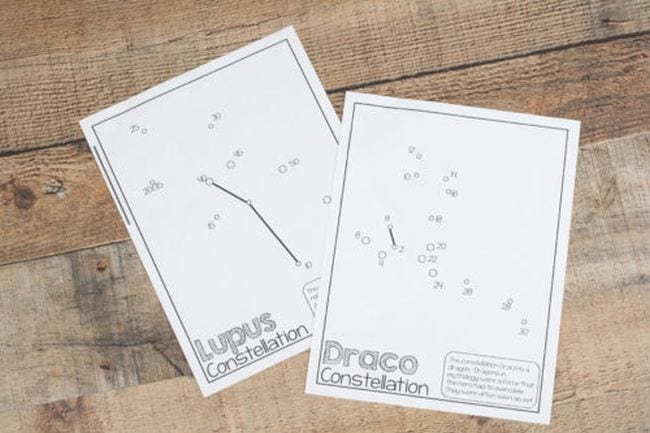
Hogwarts students spend plenty of time studying the stars in astronomy. Visit Royal Baloo to get free printable connect-the-dots star charts for Lupus, Draco, and Sirius. Then challenge your students to learn about Jupiter’s moons, just like Harry and his friends do in Order of the Phoenix . Have them paint rocks to represent the different moons.
Blow up a balloon with Engorgio .
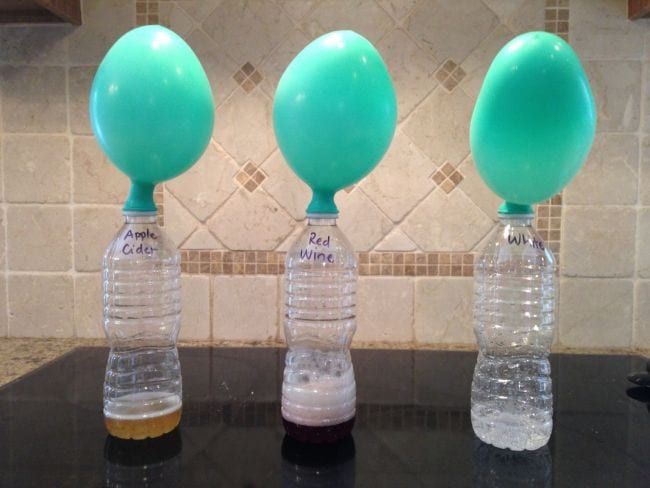
Teachers have been using this classic acids and bases demonstration for ages. Give it a Harry Potter science twist by telling kids they’re learning the Engorgio charm (the same one Dobby used to inflate good old Aunt Marge). Learn how it works from Science Night.
Peer into a dry-ice-bubble crystal ball.
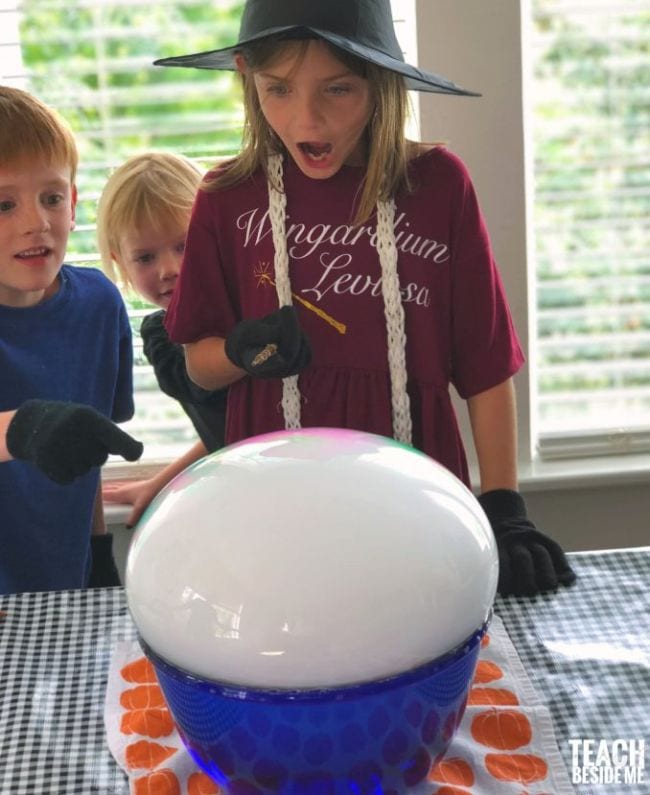
In Professor Trelawney’s divination class, student wizards learn to tell the future from a crystal ball. Use the science of surface tension and dry ice to create your own crystal ball; watching it grow will be magical, even if you can’t see the future! Teach Beside Me shows you how it’s done.
Demonstrate Incendio by Boyle-ing water.
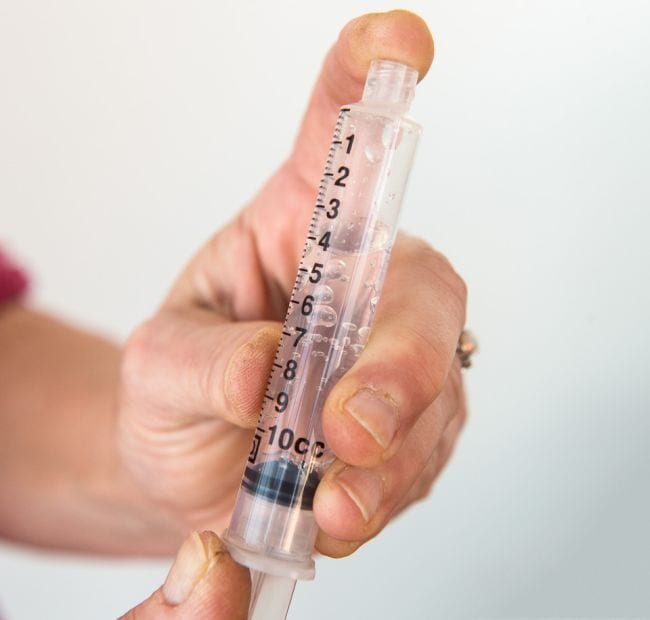
When wizards want a cup of tea, they don’t have time to wait for the kettle to boil. They simply cast Incendio, and water starts simmering instantly! You can copy this magic with the science of a Boyle’s law demo, which uses pressure to boil water at room temperature. Find out how it works at Exploratorium.
Snack on Bertie Bott’s Every Flavour Beans to learn dichotomous classification.
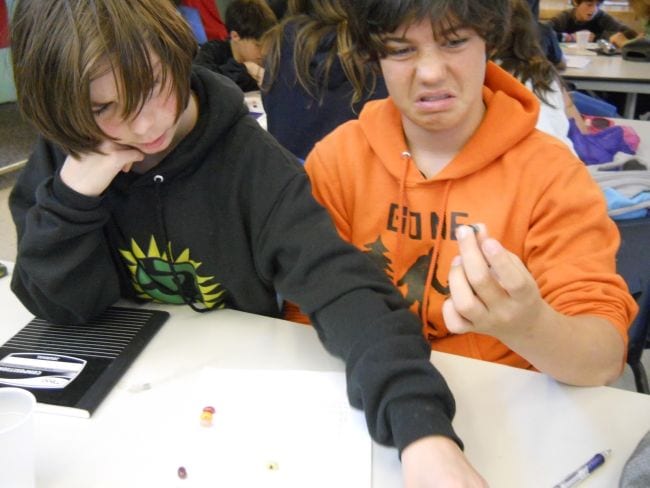
Bertie Bott’s Beans are familiar to every Harry Potter fan! (Who can forget poor Dumbledore chomping down on an earwax-flavored bean?) Fortunately, you don’t have to visit Honeydukes to get some; even Amazon carries them now . And they’re perfect for carrying out an experiment in dichotomous classification systems. Learn how to conduct the experiment here.
Brew up some magnetic Troll Bogey slime.
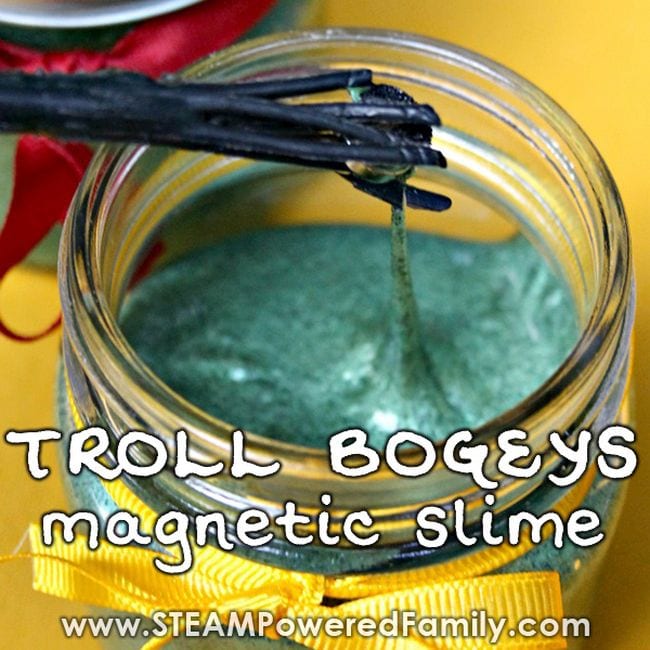
Slime never loses its appeal for muggles and wizards alike. Make some with your students, talking about the way polymers are formed in the chemical reaction. Add iron oxide powder and use a magnet to levitate your slime seemingly by magic! STEAM Powered Family has the full details.
Practice transfiguration with oobleck.
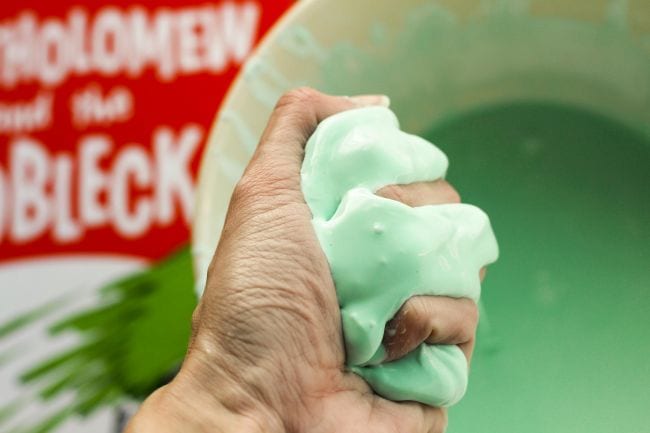
Transfiguration is a great topic for talking about the three states of matter: solid, liquid, and gas. But then there’s oobleck, that oh-so-magical non-Newtonian liquid. Where does it fit into the mix? Mix up a batch with Scientific American to find out.
Engineer a golden snitch catapult.
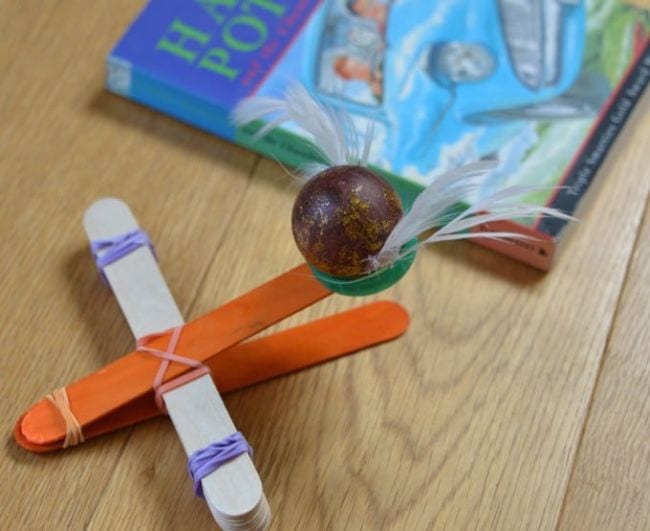
When wizards play quidditch, the golden snitch flies through the air by itself. Your students will have to give it a little help by engineering the best catapult they can instead. Get started with basic instructions at Science Sparks.
Bring a basilisk to life with fire.
You’ll probably want to head outside for this bit of Harry Potter science! The chemical reaction is caused by heating baking soda with fire. As it burns, it releases carbon dioxide gas, which pushes out the burning sugar “snake.” Learn how the science magic happens from Wonder How To.
Create color-changing flowers for herbology class.
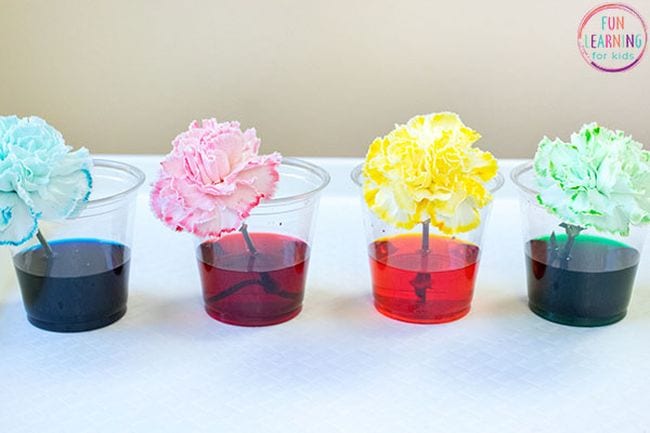
Professor Sprout could probably change the color of flowers by waving her wand, but your students will need a little science. Capillary action will do the trick! See how it works at Fun Learning for Kids.
Mold some puffapod seed bombs.
When you drop a puffapod seed on the ground, plants grow and flower instantly. These seed bombs won’t grow quite so fast, but they’re still a fun science project.
Examine one of Hedwig’s owl pellets.
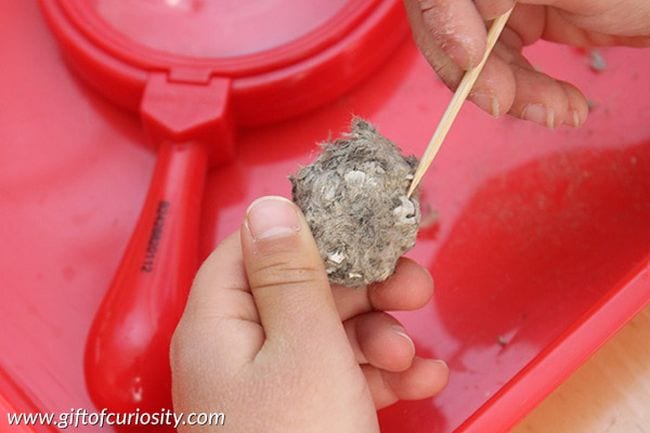
Creep up to the owlery one evening and gather up some owl pellets (or order them from Amazon ). Have your students dissect them to learn what Hedwig, Errol, and Pigwidgeon eat when they go hunting at night. See what you might find at Gift of Curiosity.
Watch the Veela dance with homopolar motors.
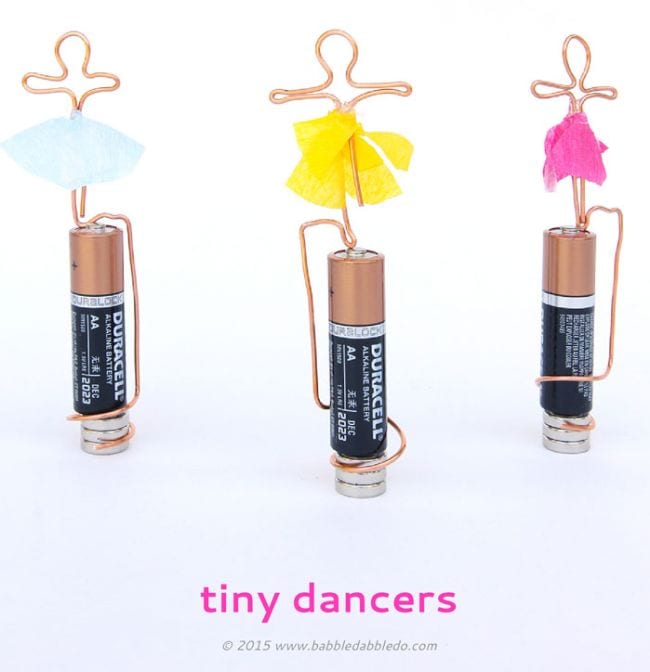
Use copper wire, magnets, and batteries to create tiny spinning dancers like the mesmerizing Veela. Babble Dabble Do shows you how.
Use ice potion to hold fire in your hand.
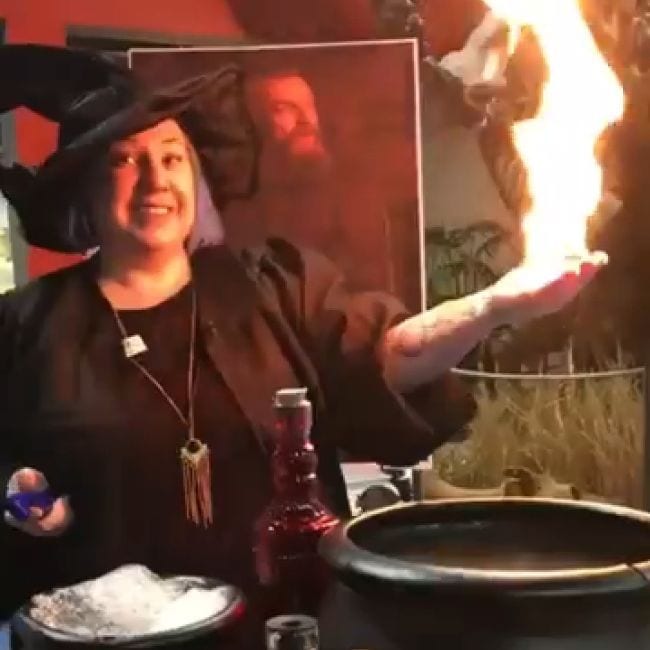
This last Harry Potter science experiment might seem the most magical of all. Squirt a pool of ice potion (hand sanitizer gel) into your hand, and set it on fire. The high alcohol content means the flame burns at a fairly low temperature, and the water in the hand sanitizer will put out the fire after a short time. Feeling nervous around fire? Try it on a hard surface first. Thought Co walks you through the process , so don’t be scared!
How do you turn your muggle students into science wizards? Come share your ideas on the WeAreTeacher Chat Group on Facebook.
Hogwarts professors have a lot to teach us. Check out the 5 Lessons You Can Learn About Teaching from Harry Potter.
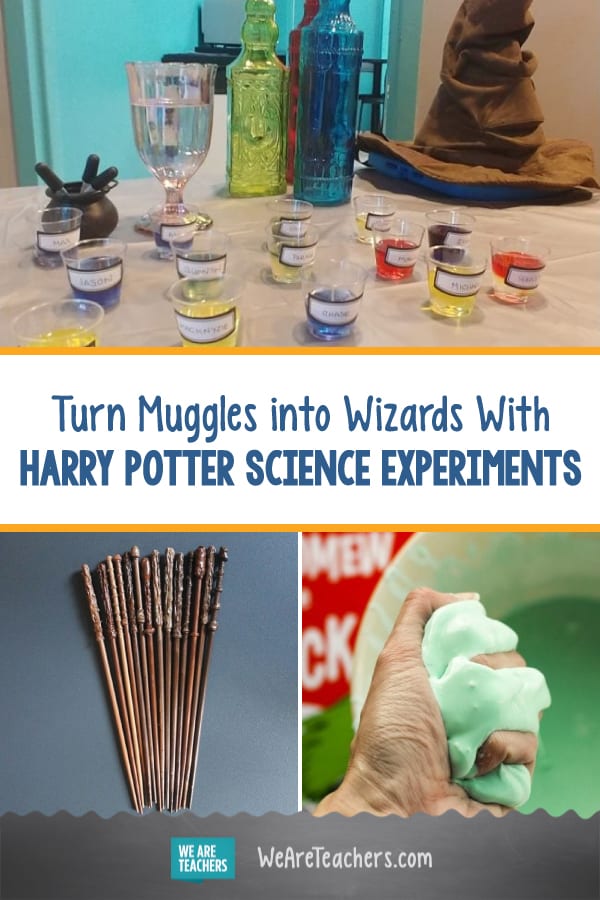
You Might Also Like
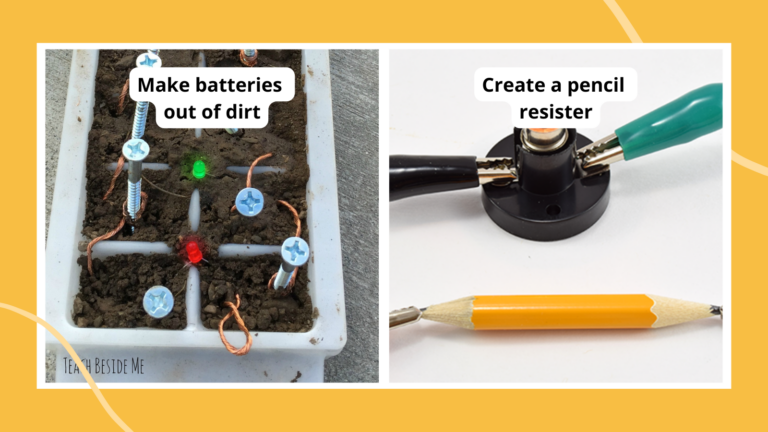
24 Shockingly Fun Electricity Experiments and Activities for Kids
Play dough circuits, LED magic wands, and more! Continue Reading
Copyright © 2024. All rights reserved. 5335 Gate Parkway, Jacksonville, FL 32256
Babble Dabble Do
4 Easy Magnet Experiments That Will Amaze Your Kids
January 30, 2015 by Ana Dziengel 16 Comments
This super simple set up yields 4 easy magnet experiments that kids will absolutely love! And it just so happens these project are a great tie into Valentine’s Day though honestly they are fun any time of year! So what does magnet science have to do with Valentine’s Day? Well….
This project was originally part of the sensory series Playful Hearts: Valentine’s Inspired Play & Learning. For more projects in the series scroll to the end of the post.
Have you ever noticed that some of the common sayings people use to describe love and attraction are based on the scientific phenomenon of magnetism? Here are some examples: They had a magnetic attraction. He exudes animal magnetism. They are polar opposites. I was drawn to her. She has a magnetic personality.
It makes sense that love and magnetism are synonymous. Love is that indescribable feeling you get with certain people that makes you feel all warm and gushy. In the case of romantic love perhaps it makes your heart race, your palms sweat and you can’t help but feel its strong force.
Magnets have a similar effect. Magnets are objects that exude a strong force field around them that causes them to attract ferromagnetic materials and other magnets themselves. Strong magnets are drawn immediately together when placed in close proximity. And did I mention that this magnetic field is invisible, just like love? You can’t see it but you can certain feel it, and it’s a fun sensory experience for kids to try and “touch” an invisible force. For our post today we made a simple pyramid structure that will give you the chance to explore the invisible and strong attractive force called magnetism.
This post contains affiliate links to products I recommend to my readers.
Magnet Magic: Easy Magnet Experiments
Tips before starting: .
- One of the ways we have fine tuned this project over the years is to substitute modeling clay for the loom bands. It’s MUCH easier for kids to put together on their own.
- We also made our own wands with a pencil and ceramic disc magnet hot glued to the end.
- Ceramic Donut Magnet
- 12″ Bamboo Skewers
- Rectangular Ceramic Magnets
- Magnetic Wands OR use a pencil with a ceramic disc magnet hot glued to the end
- Small rubber bands (loom bands ) OR Substitute modeling clay or play dough!
- String or yarn
Instructions
- Step One Cut a piece of string about 8” long and thread through a donut magnet. Tie tightly.
- Step Two Connect the ends of two skewers by overlapping them and wrapping a loom band around the joint.
- Step Three Repeat Step Two to connect a third skewer and form a triangle base.
- Step Four Connect two additional skewers first to each other and then to the base to form one side of a pyramid. Before forming a full pyramid with the last skewer wrap the top connection with the loose end of your string. The goal is to have the donut magnet hang from the center point of the skewer pyramid. You want it to hang about 1 ½” from the base
- Step Five Add your last skewer to complete the pyramid shape. Wrap the joint tightly with a loom band.
The Modeling Clay Version:
To make the clay version:.
- Give each child (2) strips of modeling clay. Ask them to tear each strip in half and the roll the halves in a clay sphere. They will need (4) spheres in total.
- Construct the triangular base with a clay sphere at each joint.
- Once the base is complete, add a skewer to the top of each sphere and collect at the center point to form a pyramid. Use the last clay sphere to connect the top three skewers.
- The magnet on a string may be pressed into the top clay sphere to hold in place at the desired height.
The Easy Magnet Experiments
This little DIY pyramid structure can be used to make several different observations about magnets. I loosely divided them into 4 mini experiments you can first watch in this video and then read about below.
Easy Magnet Experiment #1: Follow That Force
Can you move something without even touching it? Magnetic force is very strong when magnets are placed in close proximity to each other. To see just how strong it is try this: Take two rectangular magnets and place them under the center point of the hanging donut magnet. Gently slide the rectangular magnets around and watch as your donut magnet follows the magnetic force. Twists and turn the donut magnet by twisting and turning the rectangular magnets beneath. Seemingly defy gravity by suspending your donut magnet at an angle!
Easy Magnet Experiment #2: The Indecisive Magnet
Magnets have a north and a south pole. This means that one end of a magnet attracts and the other side repels if placed next to another magnet. This is a fun observation to make with magnets of any kind. To see how this repelling and attracting can drive a magnet crazy try this: Place one ceramic magnet under the center point of each bottom chord of your triangle base. Now gently lift your donut magnet and let it swing. It will bounce back and forth between the three magnets’ fields as it encounters the different polarities. It will look like a wildly indecisive magnet that has no idea where to go! Move the rectangular magnets around to see what happens to the center magnet and how it swings based on its proximity to the different magnetic fields.
Easy Magnet Experiment #3: An Invisible Dance Partner
This is my favorite experiment. Let the donut magnet rest as still as possible at the center of the pyramid. Now take a magnetic wand (or a strong magnet) and begin gently waving it near the donut magnet (don’t get too close or the magnets will stick together). Watch as the donut magnet begins to sway and twirl. You can really make that donut magnet shake it’s groove thing simply by moving your wand nearby! Because our donut magnet is suspended by a string it amplifies the twirling action. And for any doubters who think that the slight breeze generated by waving your hands is causing the magnet to dance, try waving your hand nearby without the wand. The donut stays put.
Easy Magnet Experiment #4: The Jitters
Place two rectangular magnets underneath the donut magnet. Gently pull on the donut magnet to release it from the magnetic field then let it drop and swing over the rectangular magnets. It will quickly be caught right back in the magnetic field and move quickly back and forth in a jitterbug dance.
Leon Theremin . How many of you know and are fascinated by the musical instrument known as the Theremin? If you don’t know what I am talking about please go watch this video RIGHT NOW of the most well know Theremin performer Clara Rockmore.
The Theremin is the only musical instrument that is played without physical contact. It was invented in the 1920s by Leon Theremin and is based on the phenomenon that interrupting an electromagnetic field can produce audible frequency changes. Essentially the Theremin has two antennae that broadcast a signal to each other and when you wave your hands between the antennae you interrupt the magnet field between them causing the signal to change. Here is a great little video demonstrating it .
Leon Theremin was a Russian scientist who discovered this phenomenon when working on proximity sensors for the Russian government. He went on to patent this electronic musical instrument and it’s eerie sound can be found in many a sci-fi movie soundtrack from the 1950’s. Though it became associated with campy film soundtracks in the 1950’s it was actually used in some classic films like Spellbound and The Lost Weekend and is most famous in popular music in the song Good Vibrations from the Beach Boys.
Magnets are one of my favorite materials to work with and these easy magnet e xperiments are simple to set up and kids love to watch them in action! Magnetic attraction is seemingly magical and I haven’t met someone yet who isn’t momentarily mesmerized by it’s power and behavior, just like love.
Ready for more Valentines Inspired sensory fun?
Check out my fellow bloggers posts related to sensory play and discovery for Valentines Day:
The impossibly sweet Hanging Hearts Creative Threading Activity from Childhood 101.
An awesomely touchy feely Textured Heart Sensory Bin from Toddler Approved
A smart Valentine’s Math Station from NutureStore.
Spread Creativity like Wildfire: Pin this!
Meri cherry says
January 30, 2015 at 7:37 am
That video is AWESOME Ana!!!!!Cant wait to share it!
Ana Dziengel says
February 4, 2015 at 4:11 am
Love you mama!
March 9, 2016 at 11:40 am
Love you too! <3
Sonya Shulga says
October 12, 2016 at 7:55 pm
That’s cool i am going to do that for the science fair!
January 30, 2015 at 11:22 am
Ev loves the video!
Jeanette Nyberg says
January 31, 2015 at 6:20 am
Awesome! I love the magnets and love tie-in. And the video is amazing! It brings the whole thing to life and makes me want to run home and set this up. I *think* we have the magnets and skewers, but this is totally worth a trip to the store.
Thank you so much Jeanette!
February 10, 2015 at 2:25 pm
Very cool, Ana
August 10, 2015 at 10:08 am
I would like to do the same magnetic experiment with my little students. But, I failed. Would you mind give me some hints? Or advice me the dimension of the rectangular magnet and donut magnet?
September 8, 2016 at 11:21 am
I work for a hands-on exploring museum in MN, and I was scrambling for an alternative project. The one I had planned on using just wasn’t as fun, easy or amazing as I had hoped. Then I found your post!
We already had all the materials on hand, so I jumped in and had a camp full of kids try this. I was a little anxious, since a lot of the campers were upper elementary aged, and I worried they might be “too old” for a magnet game.
I let each camper choose if they would make the pyramid out skewers (like your example), regular plastic straws (colorful of course!) or giant bubble-tea straws. Then each figured out how to hang their magnet from the peak using string, and how they would like to attach or control the side magnets.
I was so pleased that everyone had fun designing and building this project, and then playing with it! (*Playing with something just created is always the test for how awesome it was!)
Thanks so much for sharing this fabulous idea! I love your blog and suggest it to everyone who asks for ideas. You are the BEST!
September 8, 2016 at 12:09 pm
Oh Sonia I am so happy to hear this!!! Woo hoo! Do you have pics? I’d love to see some of the camper’s work! Thank you so much for the kind words 🙂
October 12, 2016 at 7:58 pm
That’s cool i am doing that for the science fair at my school with my friend Alexa
October 12, 2016 at 7:59 pm
Its so FUN!!!!!!!!
November 26, 2016 at 8:54 pm
I’m surely gonna chose this as my science experiment. It’s really good!
December 9, 2016 at 5:39 am
Leave a Reply Cancel reply
Your email address will not be published. Required fields are marked *
Save my name, email, and website in this browser for the next time I comment.
Pin It on Pinterest

COMMENTS
This one really does look like magic. The kids were awed when it changed color. Use a special tea to make this color changing lemonade. Transform liquid into a solid and make ice cream in the process. It doesn't get more magical than that! A similar experiment turns juice into a slushie.
1. How to Create a Foaming Rainbow. Ok, this is pretty much the coolest project EVER! And it takes only 3 ingredients! (4 if you count the paper cups). 2. How Do Folded Mountains Form. Your budding geologist will love this easy experiment that show how mountains form. 3. Acids and Bases Experiment.
Magic and science may seem like two completely different worlds, but they are more closely related than you might think. The principles behind many magic tricks are rooted in scientific concepts. ... So go ahead, grab a magic science experiment kit, and start exploring the wonders of the scientific world through the lens of magic. Who knows ...
Timestamps:0:05 Corn flakes and magnet0:29 Watering cans trick1:28 Fade out tricks1:47 Jelly bears2:09 Milk and cola2:35 Water and magnets3:17 Balance3:39 Fe...
Easy magic science experiments you can do at home! Click on the experiment image or the view experiment link below for each experiment on this page to see the materials needed and procedure. Have fun trying these experiments at home or use them for SCIENCE FAIR PROJECT IDEAS.
25+ Easy Magic Science Experiments You Can Do At Home 'Magic' Science Experiments . Walking Water Experiment (The Best Ideas From Kids) Water Refraction Science Experiment (What We Do All Day) ... Exploring our Product Shop is like opening a treasure chest of fun and creativity for kids! Here you'll find our handpicked selection of ...
13 Magical Science Experiments for Kids. 1. Rainbow Marker Coffee Filters: It's so amazing to watch the colors travel up the coffee filters! Find the tutorial over at Make and Takes. 2. Frozen Silly Putty: You won't find putty more sparkly than this! Find the tutorial over at Paging Fun Mums. 3.
Here at Science Sparks HQ, we love a bit of magic, whether it be a memory trick, slight of hand or even some science magic. These 10 easy science tricks for kids are great fun and mostly super simple. The density one is a little tricky and potentially messy, but well worth the effort for the incredible end result. Easy Science Magic Tricks
Awesome Wizardly STEM. Our Awesome Summer Science Experiments picks for Week 3 will bring out the wizard in all of us! If your kids are fans of stories about wizards and magic, from Merlin to Harry Potter, then, poof!, this week's activities are sure to be a hit! This week features a variety of fizzing, bubbling, foaming, and mysterious hands-on science experiments you can tie in with favorite ...
Refill an empty can—without any liquid. You'll need: • Sealed soda can. • Needle or pin. • Drinking glass. What to do: Have kids stand over the sink and pierce the can's top half with ...
The Trick: The magician lights a candle with a lighter or a match in front of the audience. He then blows out the flame and immediately places the flame from a matchstick or a lighter into the smoke. To the amazement of the onlookers, the flame travels down the smoke and relights the blown-out candle. You can watch the actual trick in the gif ...
Created with "magic" ice cubes. Get the tutorial at Reading Confetti. 12. Take a bath with fizzing dough. triedandtrueblog.com. An awesome and effervescent way to get clean. Get the tutorial at ...
Kids will be amazed when the liquids float one on top of the other like magic (except it is really science). Learn more: Layered Liquids. KiwiCo. 11. Grow a carbon sugar snake. Easy science experiments can still have impressive results! This eye-popping chemical reaction demonstration only requires simple supplies like sugar, baking soda, and ...
Or, low-frequency beats can be used to create this amazing visual effect on the smoke from a vape pen. Speakers' effect on vapor from r/physicsgifs. There is a multitude of experiments that can ...
Wizards & Magic STEM. Week 3 brings out the wizard in all of us! If your kids are fans of stories about wizards and magic, from Merlin to Harry Potter, then this week's Summer of STEM lineup is sure to be a favorite. This week features a variety of fun, fizzing, bubbling, foaming, and mysterious hands-on science and engineering activities that ...
This chemical reaction experiment creates a small bubbling volcano. (Tip! Add a bit of food coloring for extra awesome eruptions.) The science: When baking soda (a base) comes in contact with citric acid, a chemical reaction starts that neutralizes the acid and releases carbon dioxide (CO2) gas. The carbon dioxide gas bubbles as it escapes.
Science magic tricks look like magic—an effect with a secret—but that secret is based on a scientific principle or concept that makes it look like a magic trick. With the help of chemistry or physics, "magic" is "science" and "science" is "magic"! Some of the tricks are actually stunts that are science lessons, while others are tricks that have secrets based on scientific principles.
Even muggles can enjoy these Harry Potter science activities. Create your own potions class, explore magical creatures, or enjoy some herbology. You can even try your hand at charms and transfiguration! These magical experiments are perfect for use at home or in the classroom. They also make great Harry Potter party ideas.
The best science experiments for kids are the ones featuring a bit of 'magic'. These stand out not just for being fun, but for sparking interest in the processes that make the trick happen. "Making science fun is essential to creating the most important aspect of learning: desire," says Steve Hinkley, president and CEO of the Adventure ...
Timestamps:0:11 Fire in arms2:22 Simple ice cream4:39 Coin and water7:36 Egg power11:30 Static electricityThis video is made for entertainment purposes. We d...
Turn Muggles into Wizards With Harry Potter Science Experiments. Because sometimes science seems like magic. The spell of Harry Potter is one that seems destined to last from generation to generation, so take advantage of the books' allure to teach the science behind magic. We got some bewitching tips from Sara Turner, Director of Awesome ...
Easy Magnet Experiment #4: The Jitters. Place two rectangular magnets underneath the donut magnet. Gently pull on the donut magnet to release it from the magnetic field then let it drop and swing over the rectangular magnets. It will quickly be caught right back in the magnetic field and move quickly back and forth in a jitterbug dance. Looks Like
Sciences Experiments that look like MAGIC! Watch Another Video! - https://youtu.be/MFylWxgdqEkHit 👍 LIKE and Subscribe - Thank you!Today we'll be watchi...